
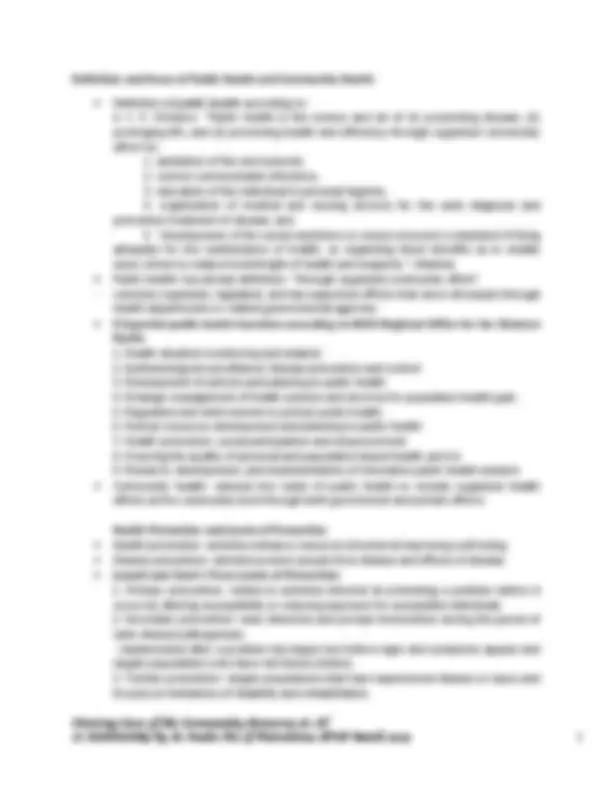
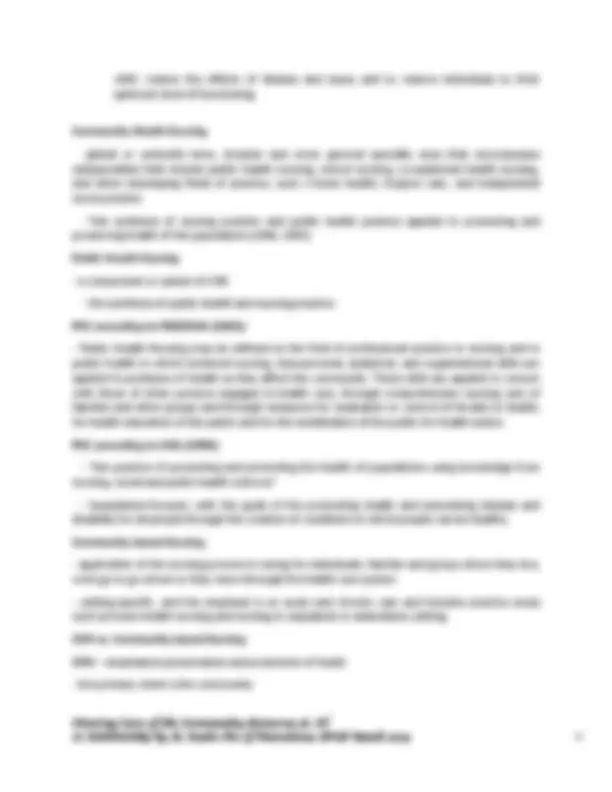
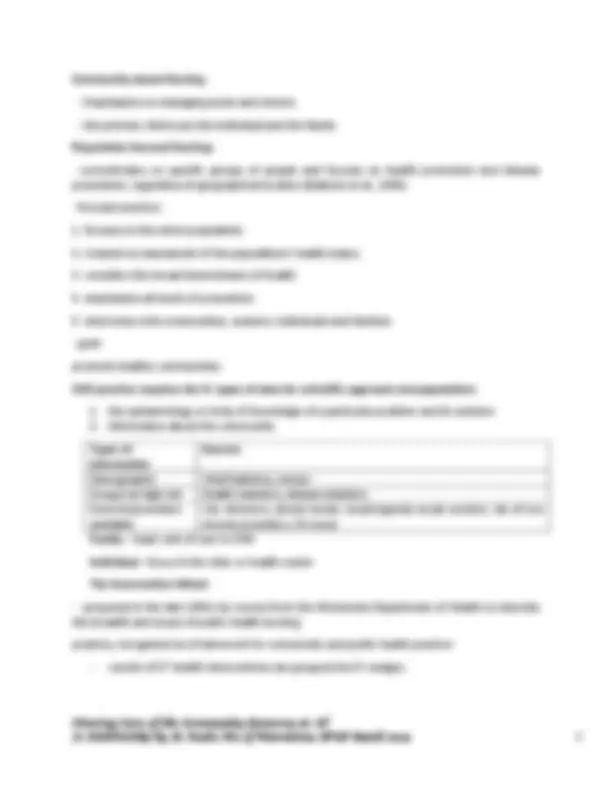
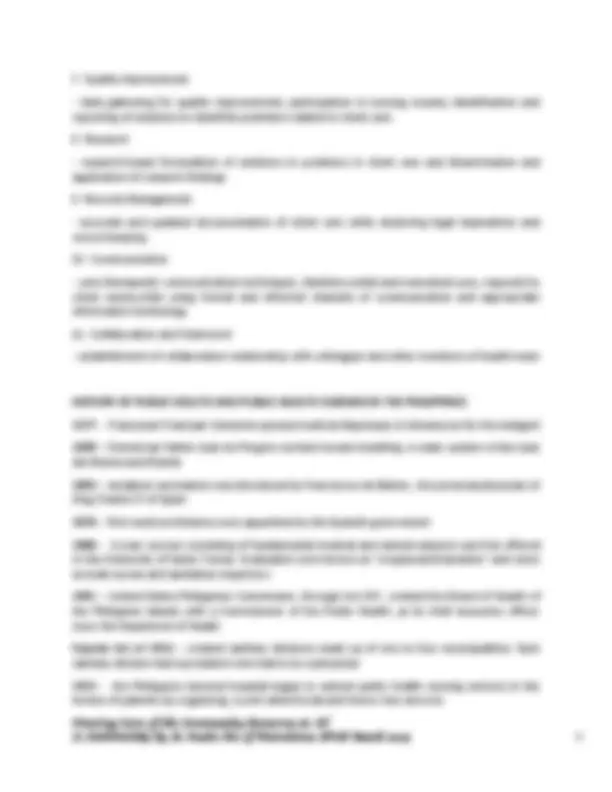
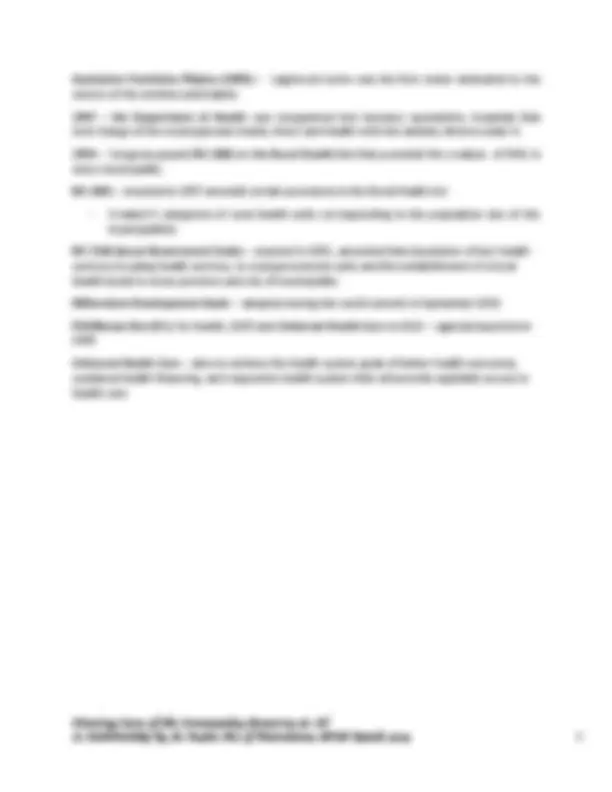
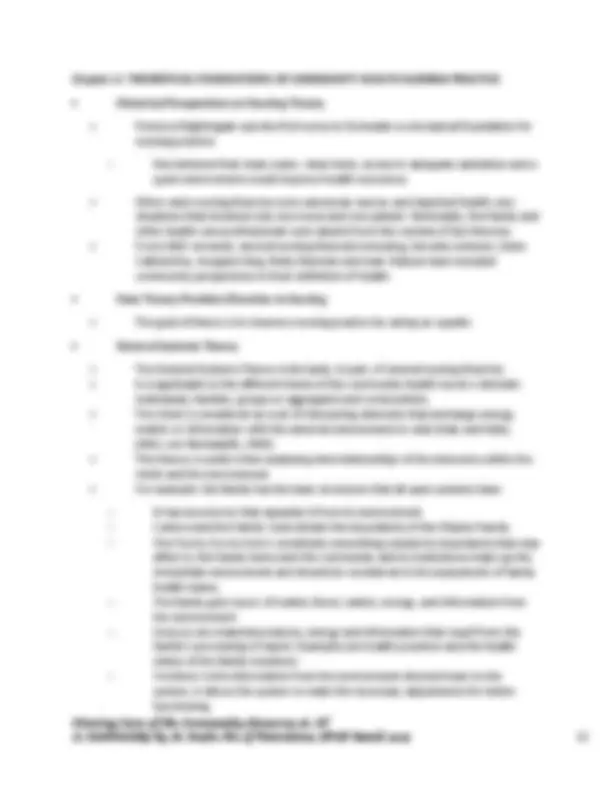
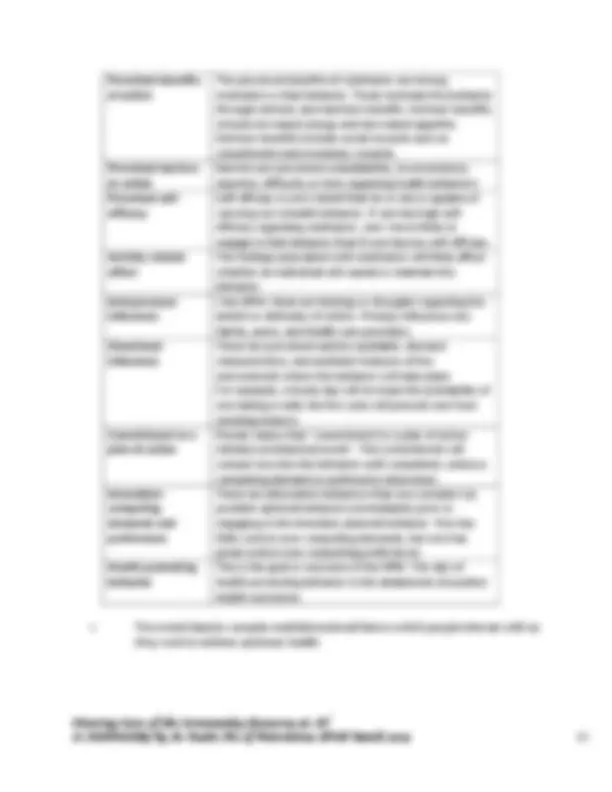
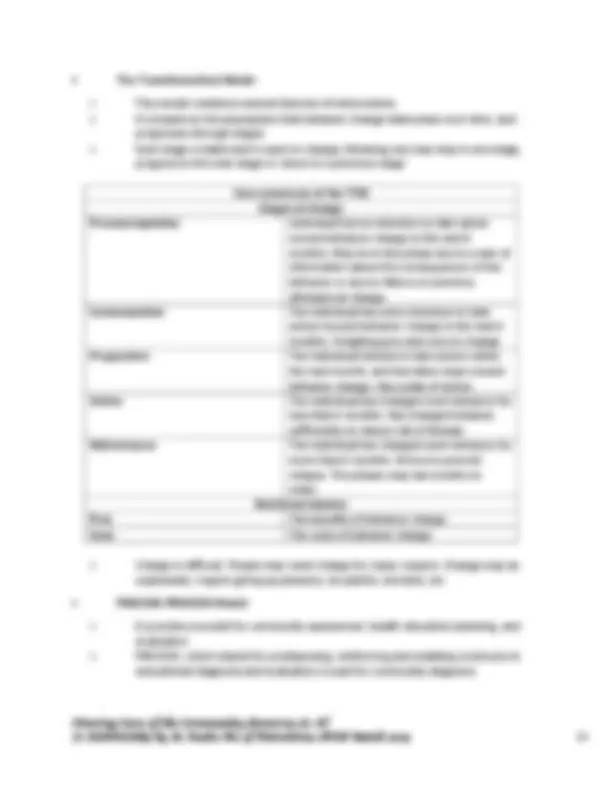
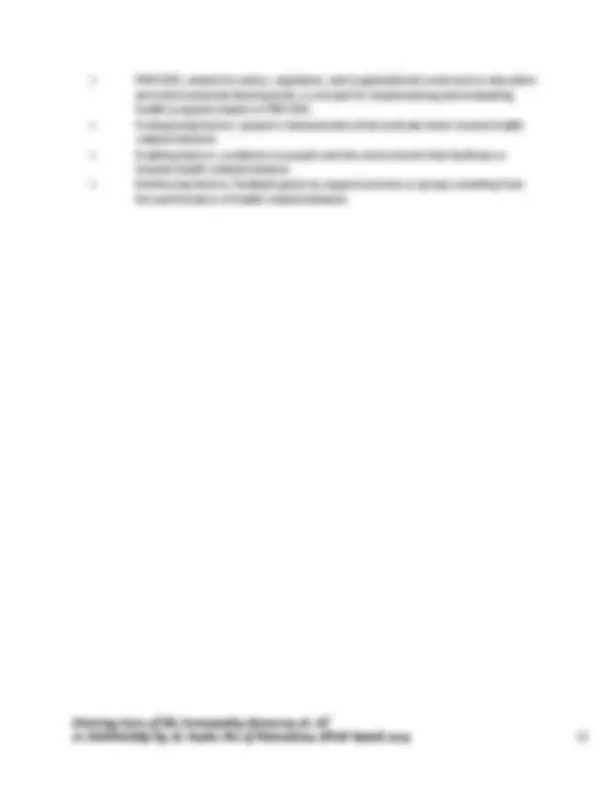
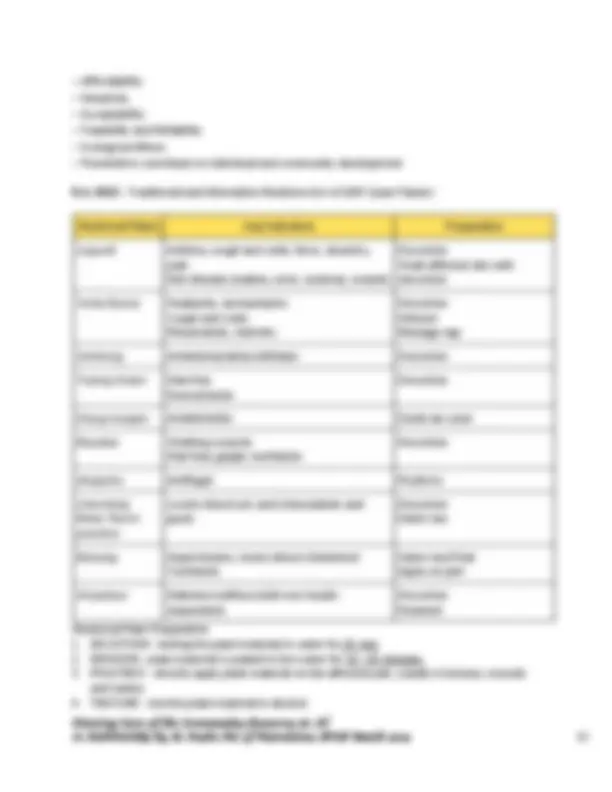
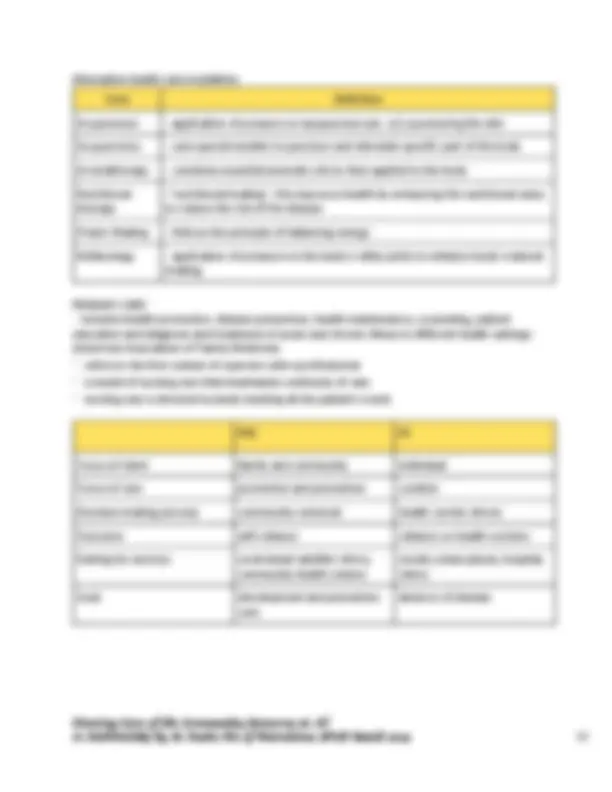
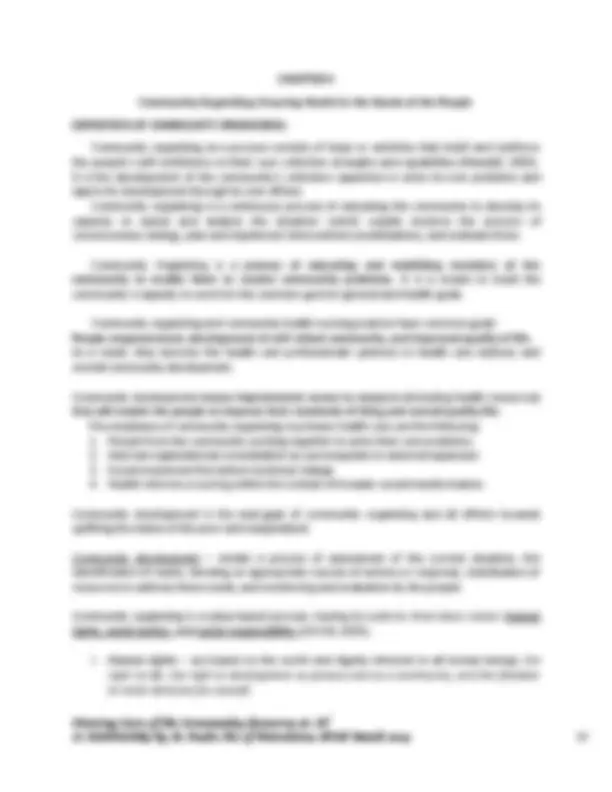
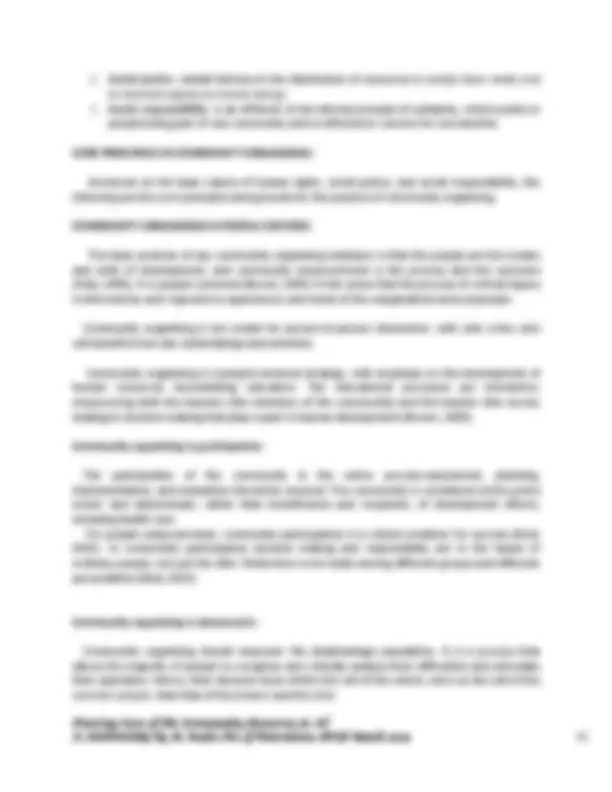
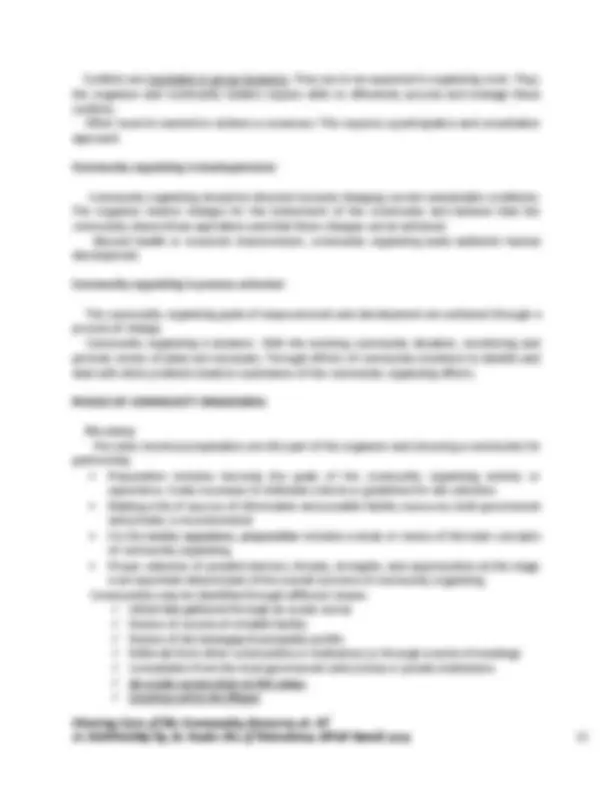
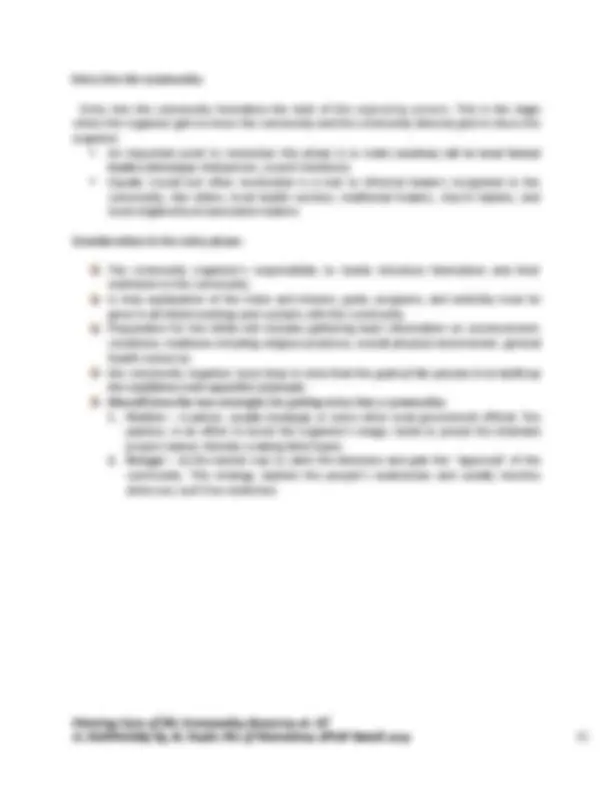
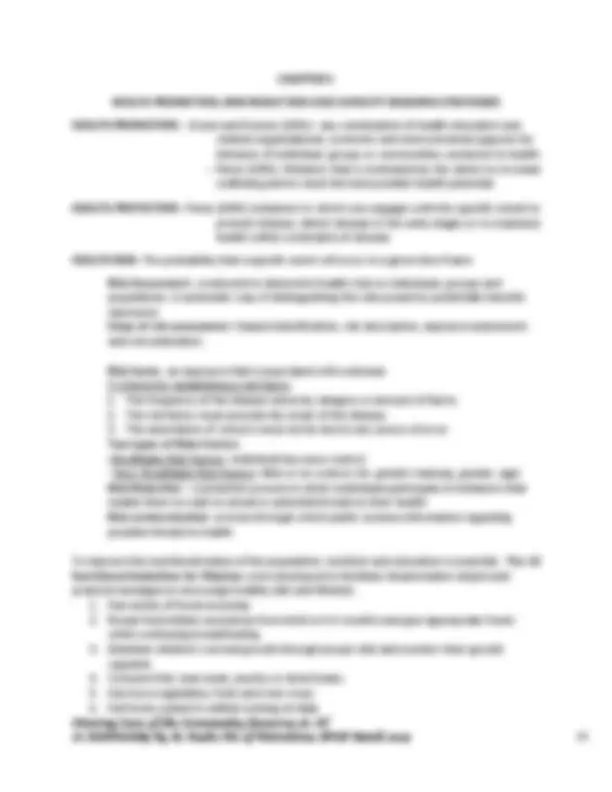
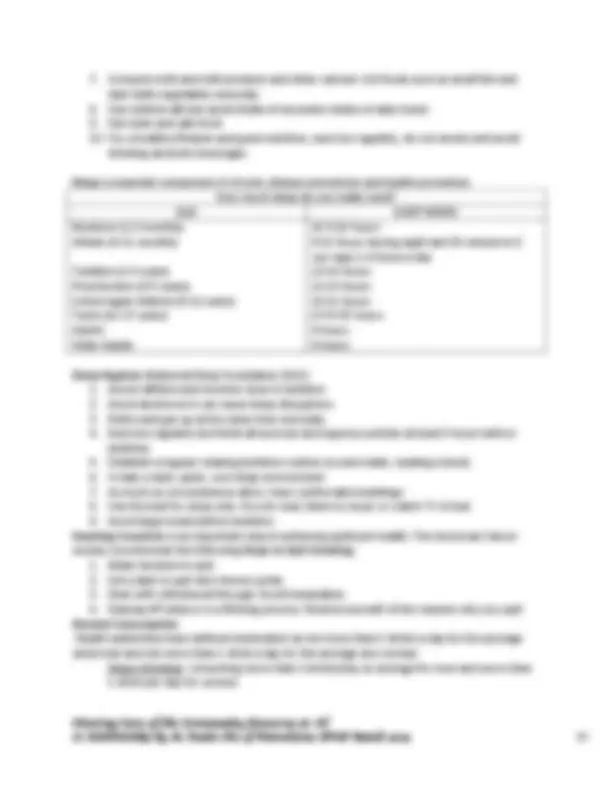
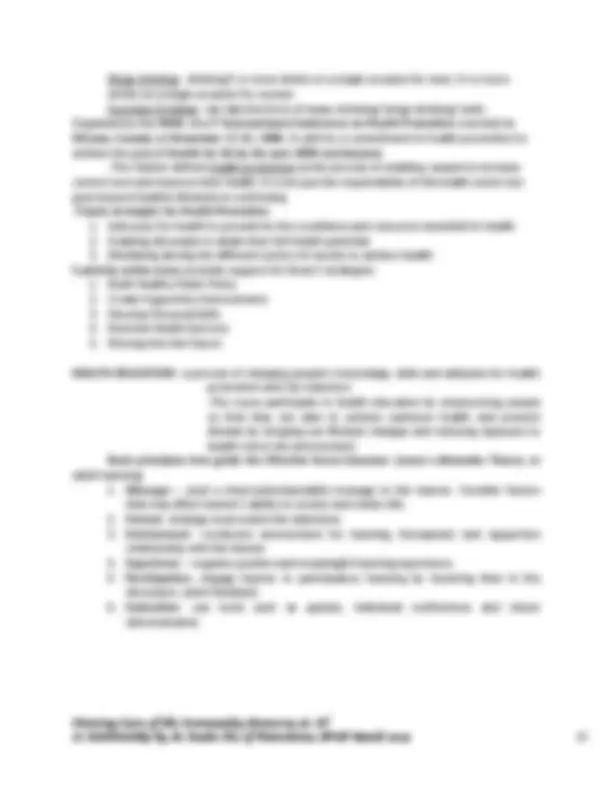
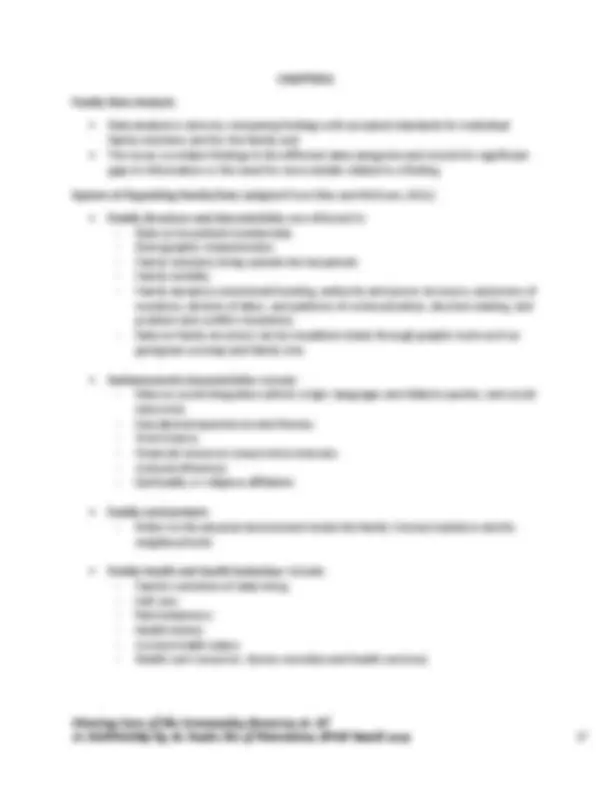
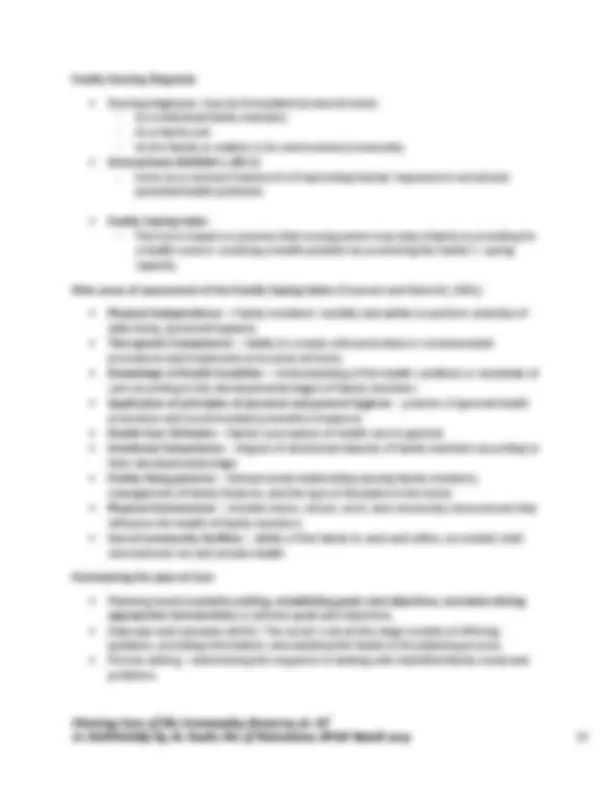
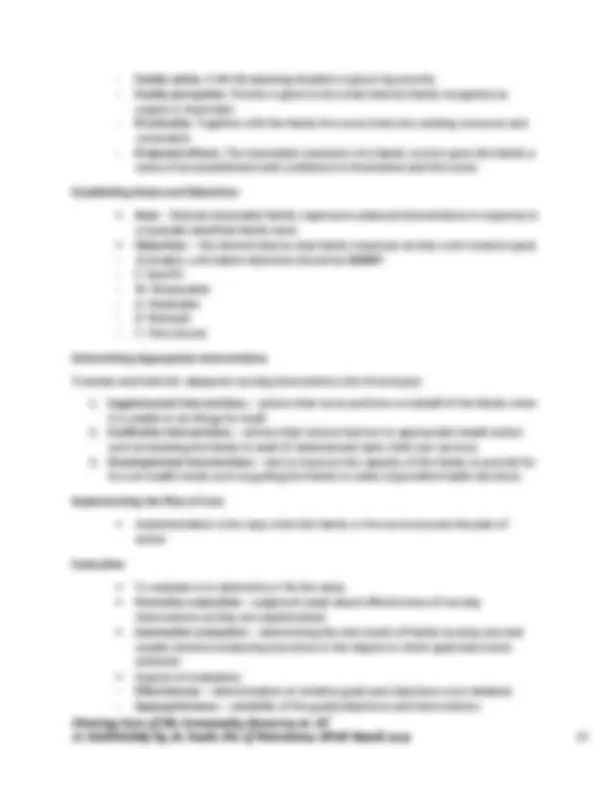
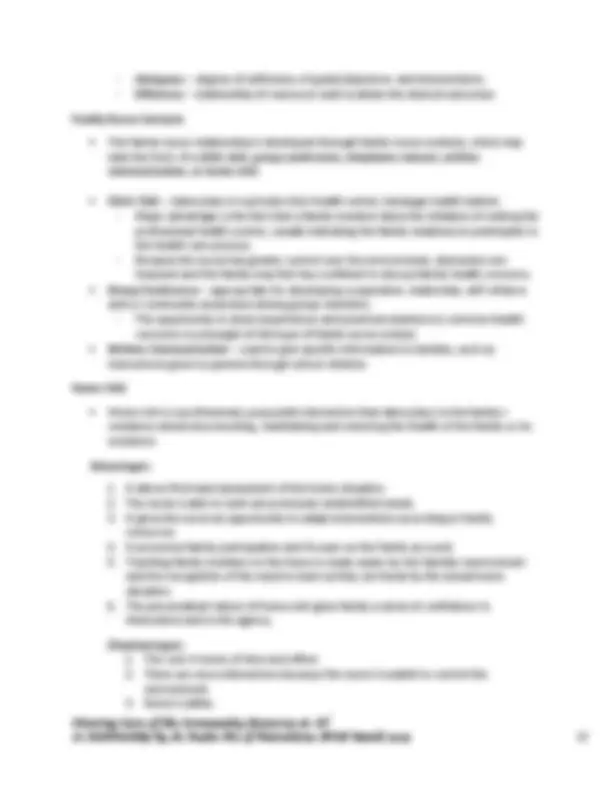
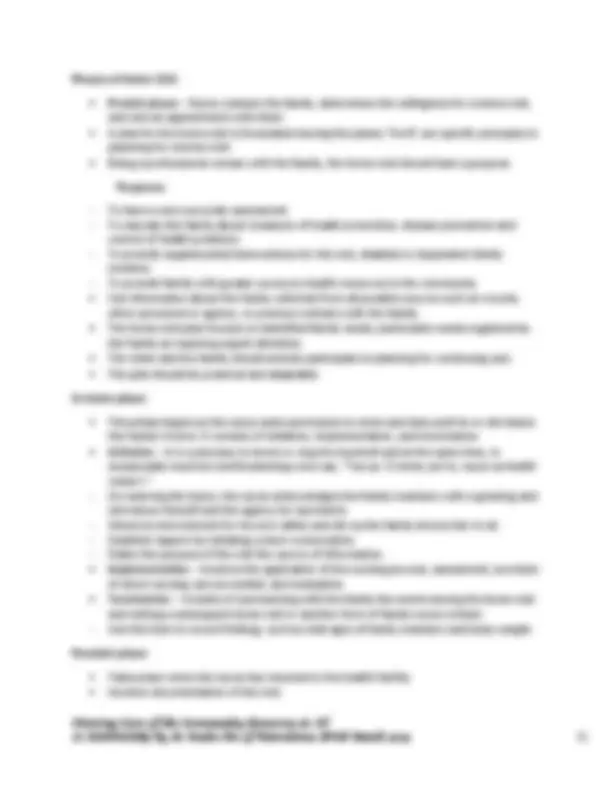
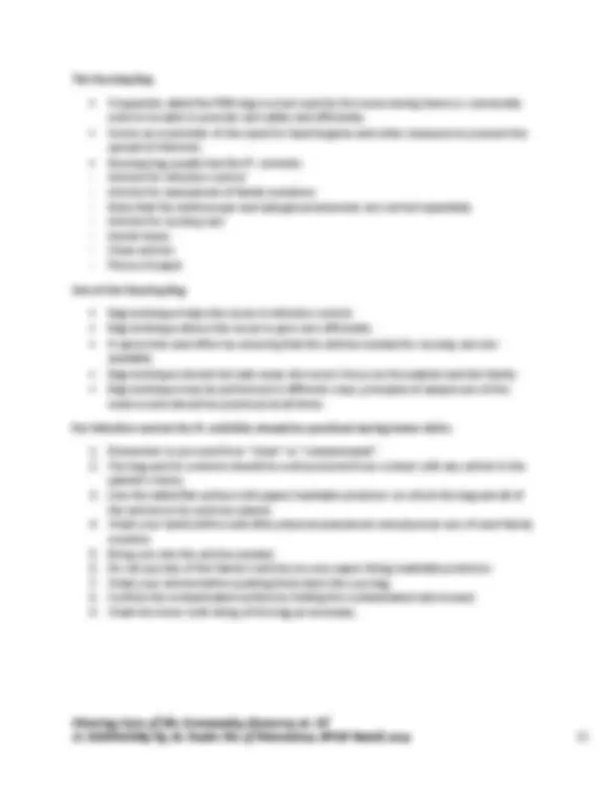
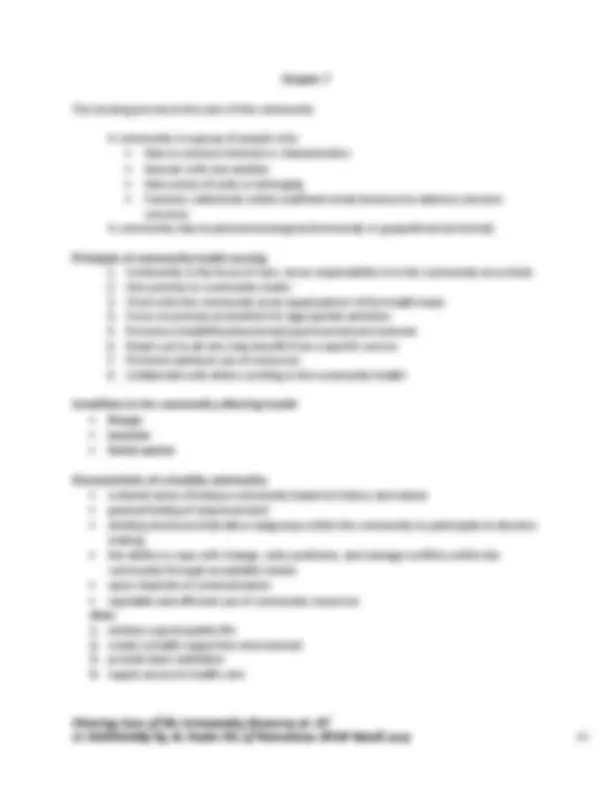
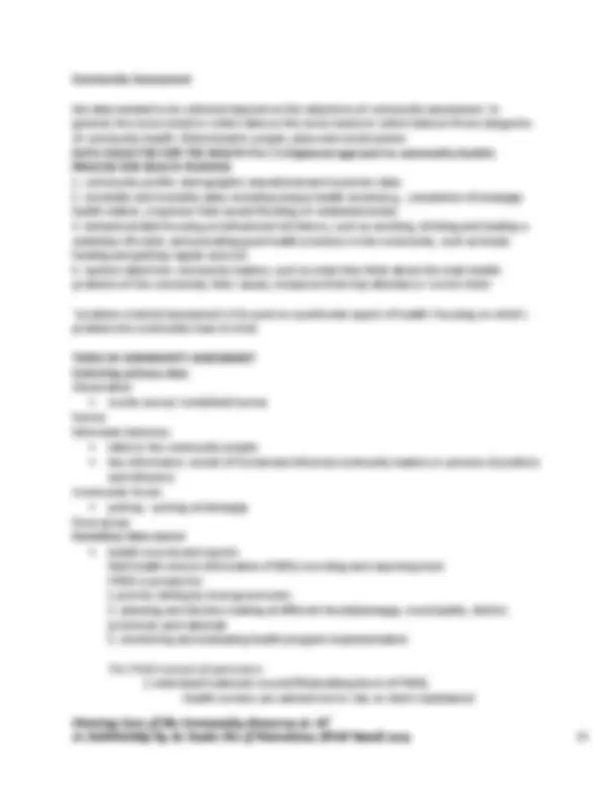
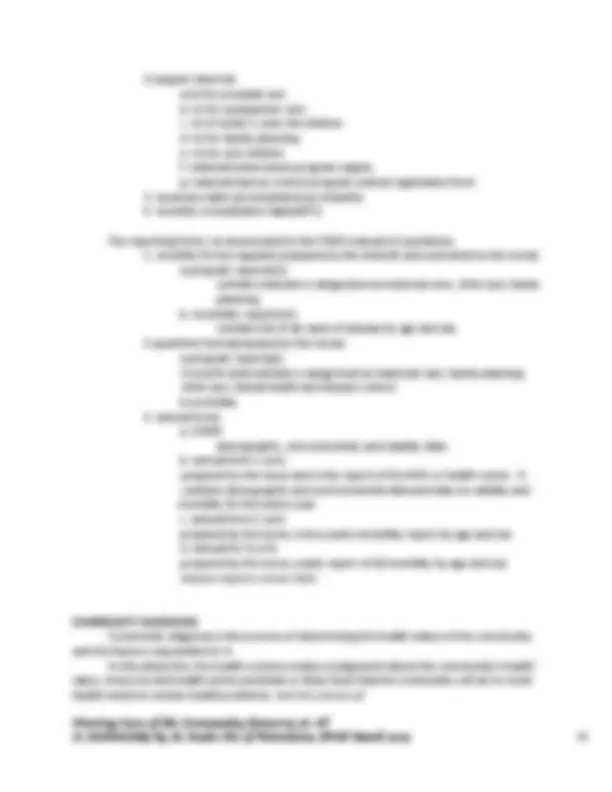
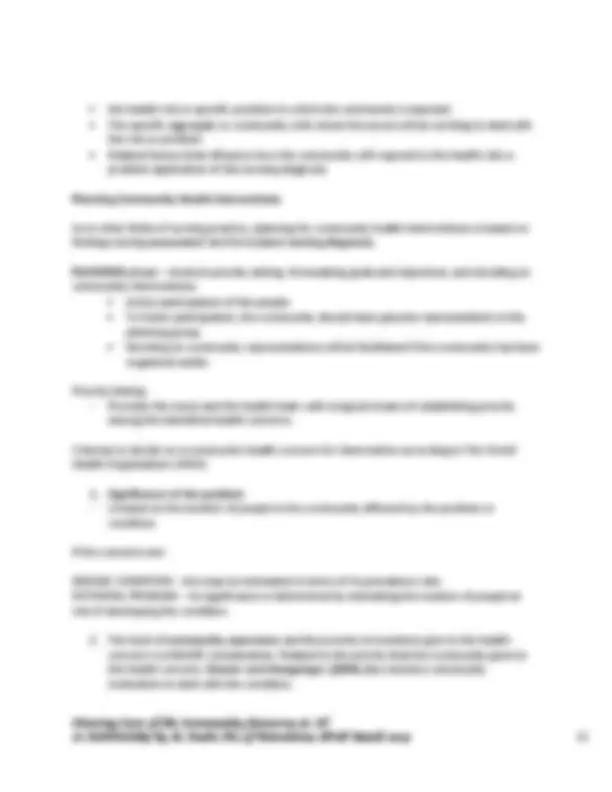
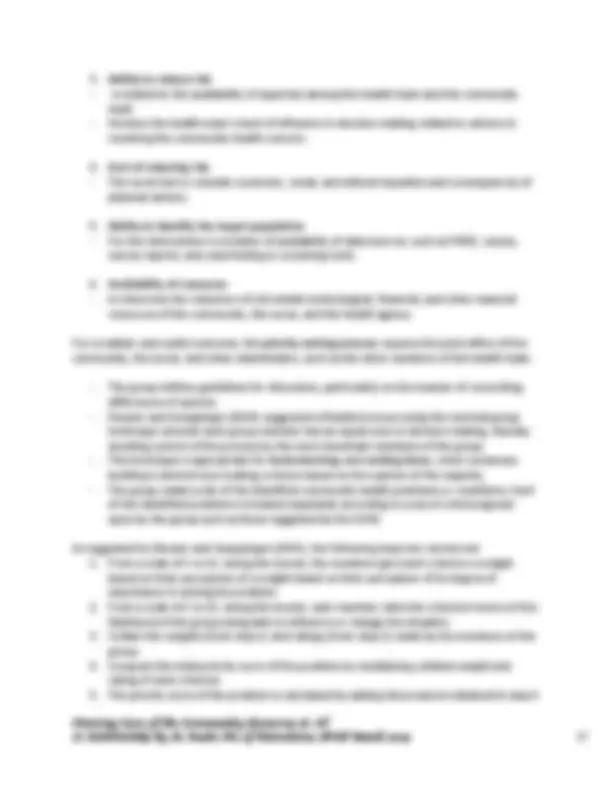
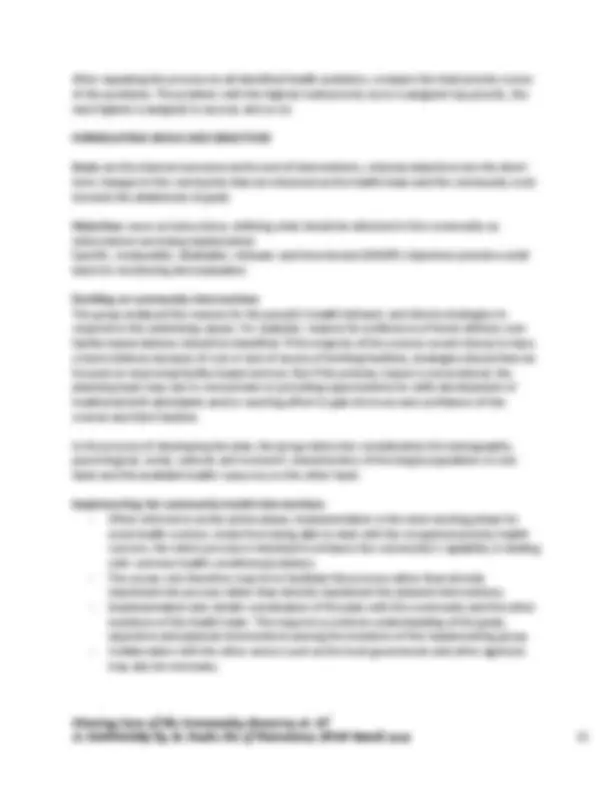
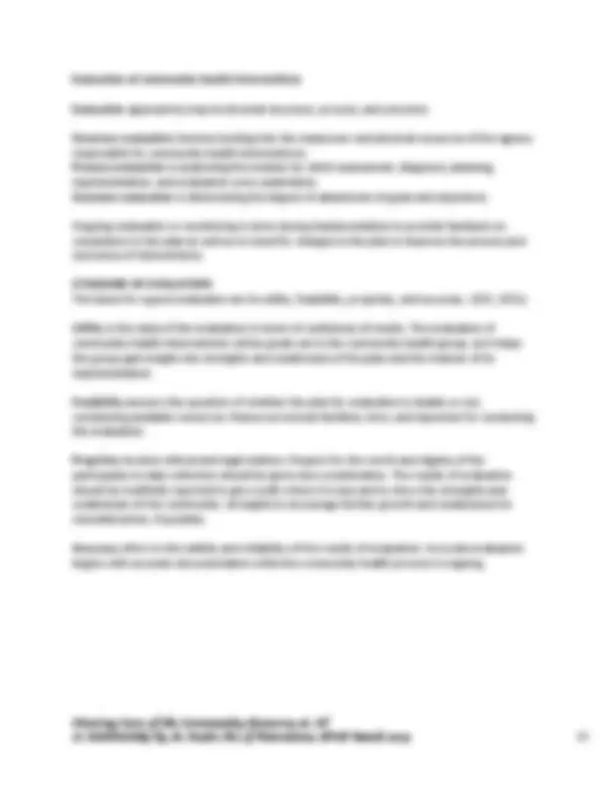
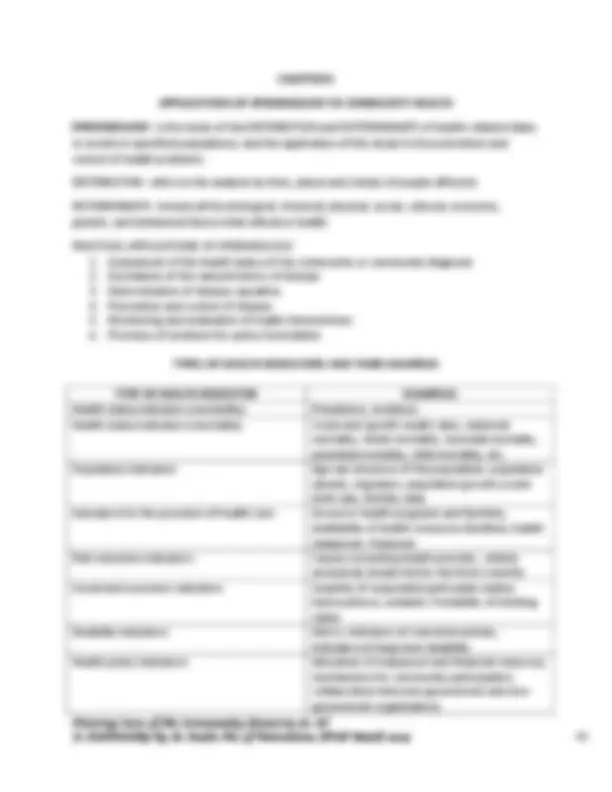
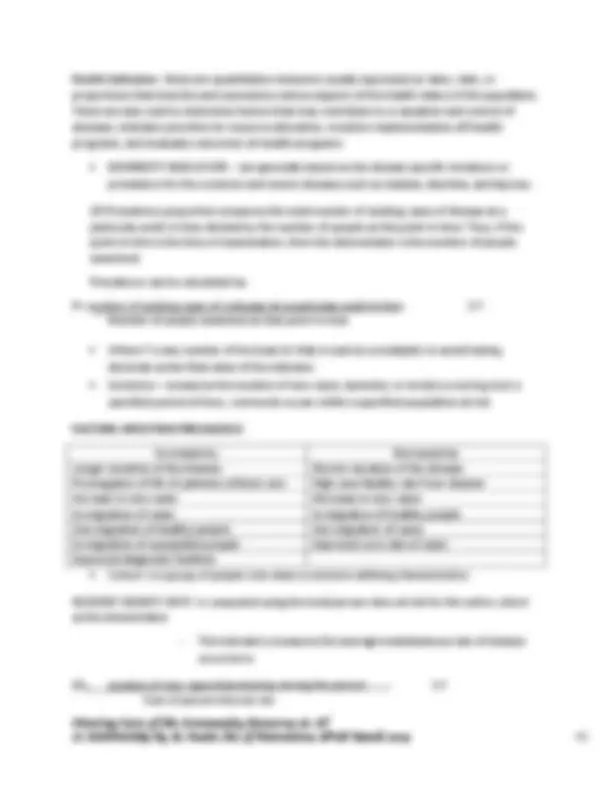
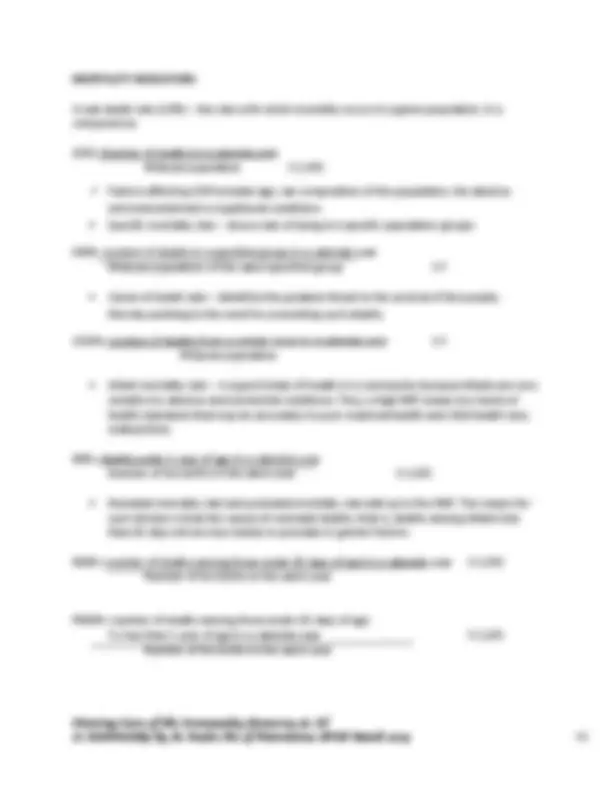
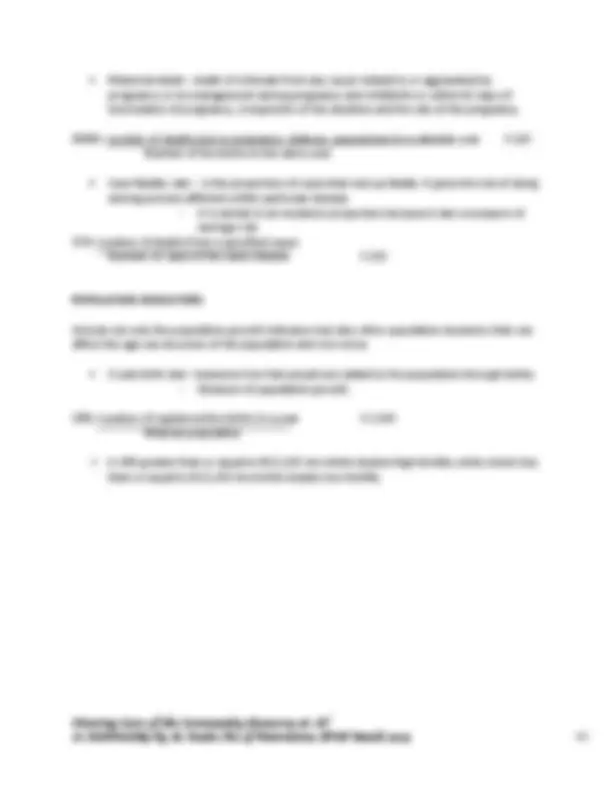
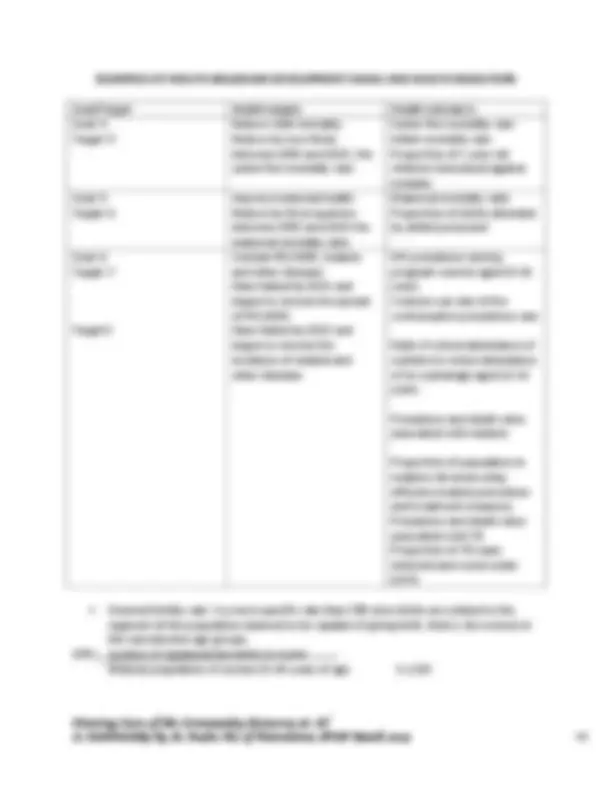
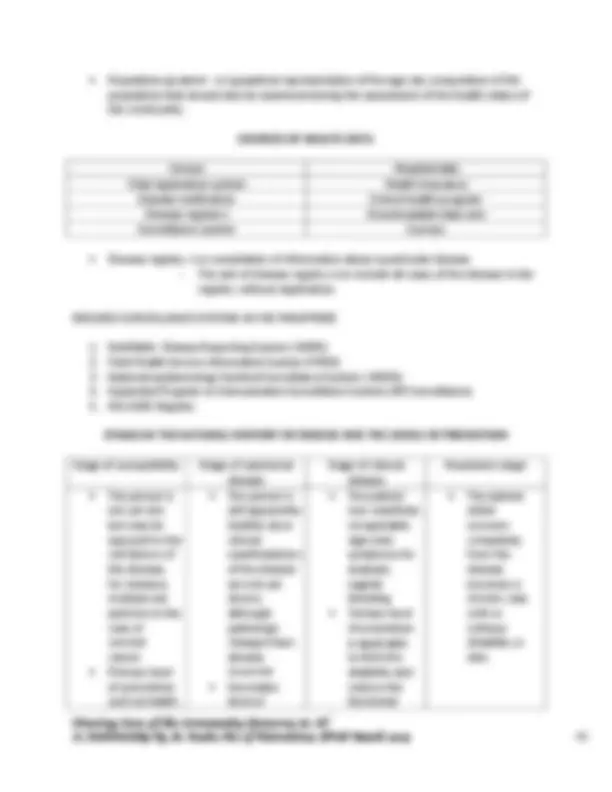
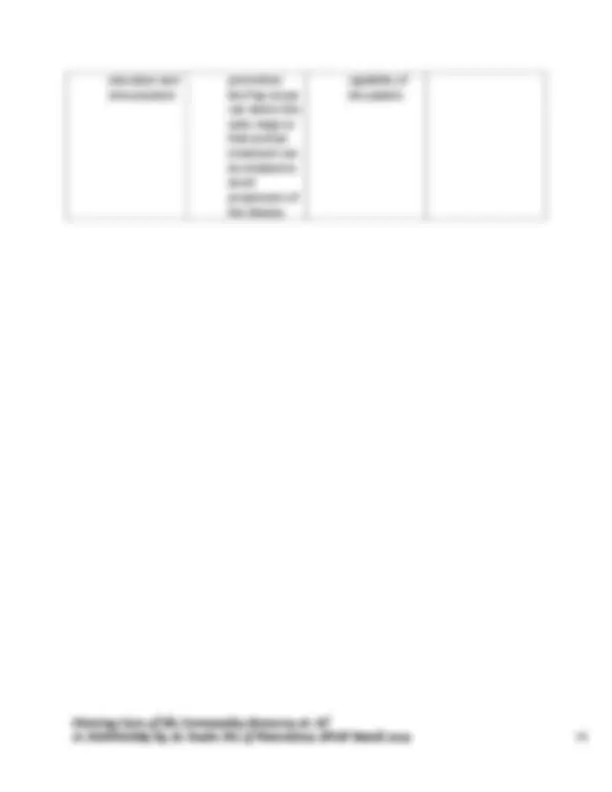
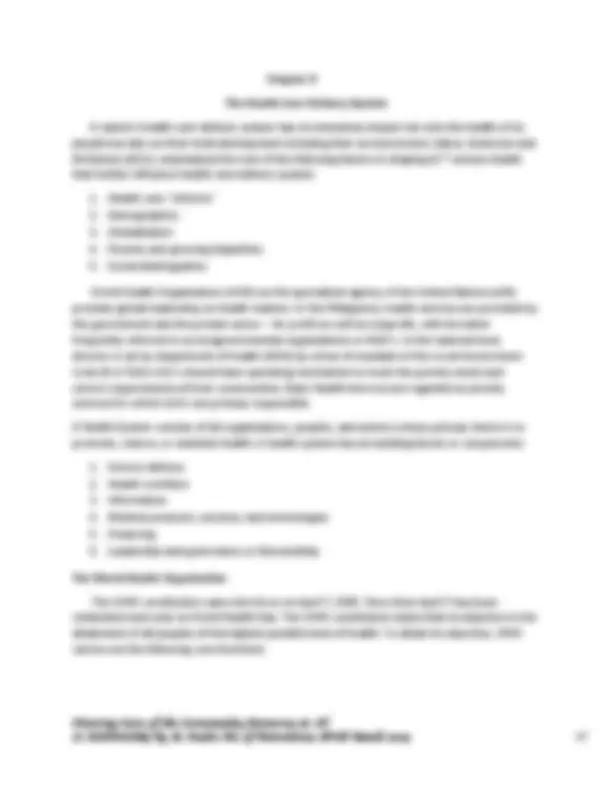
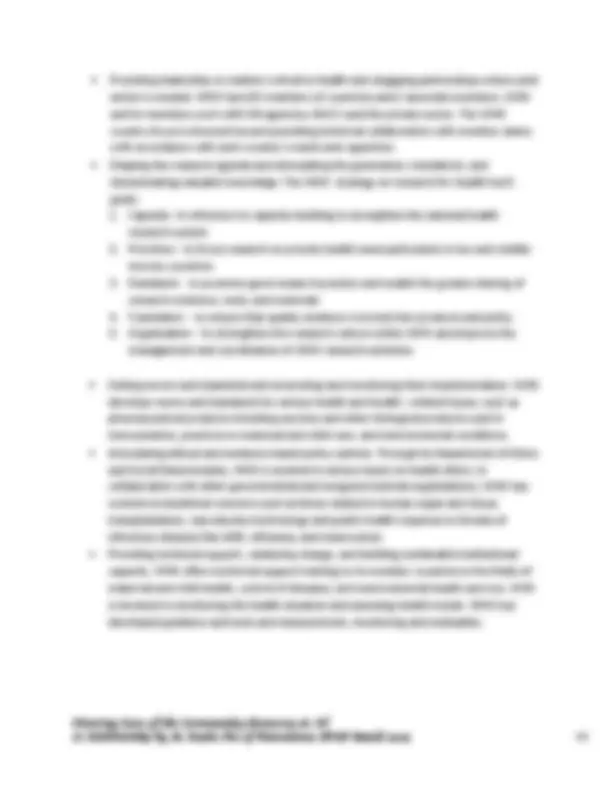
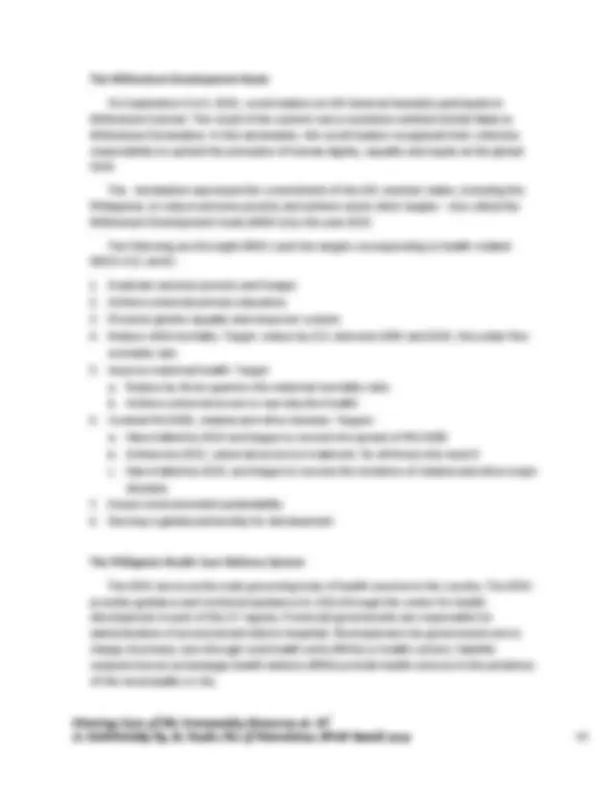
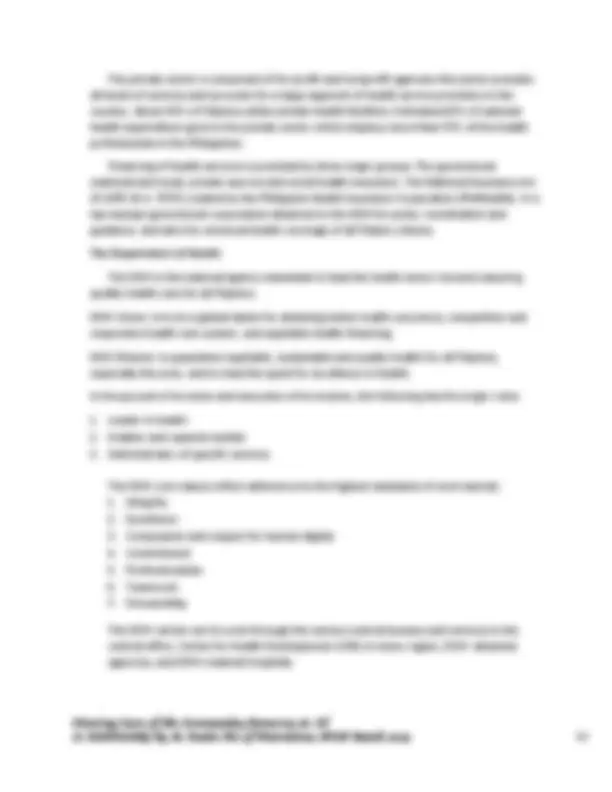
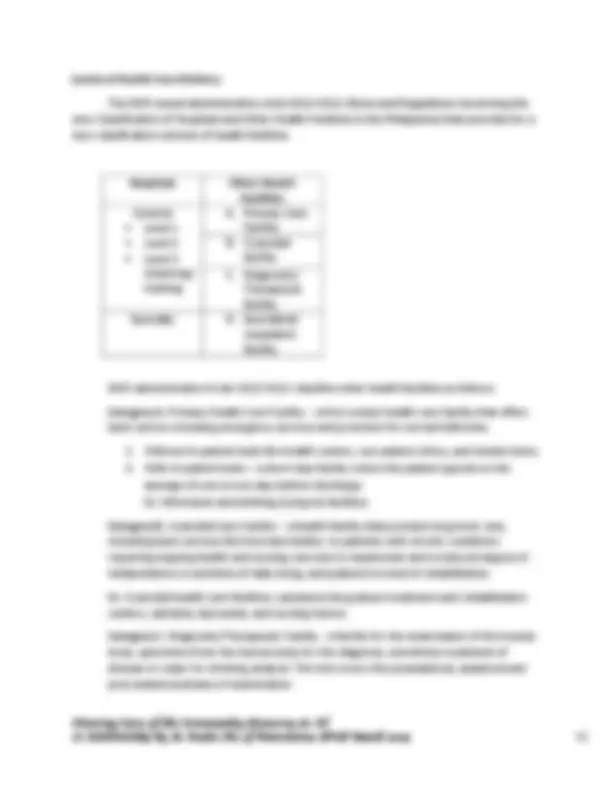
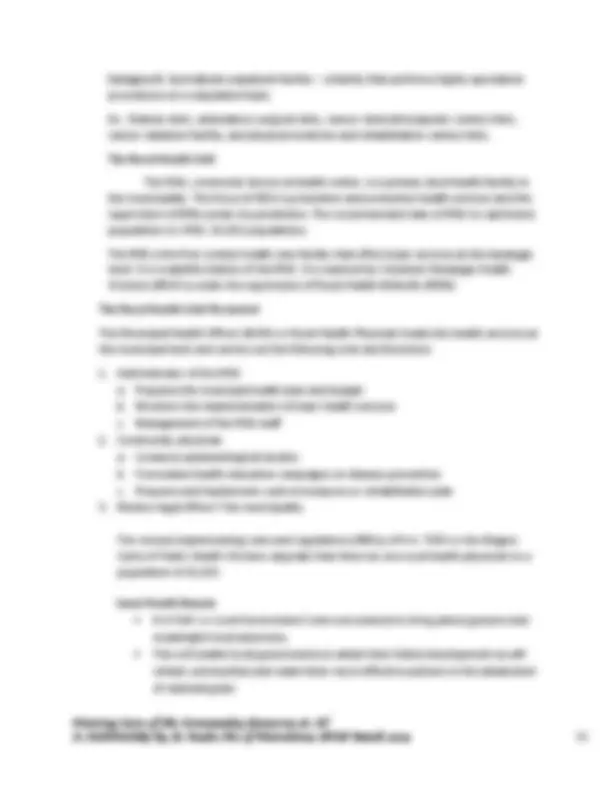
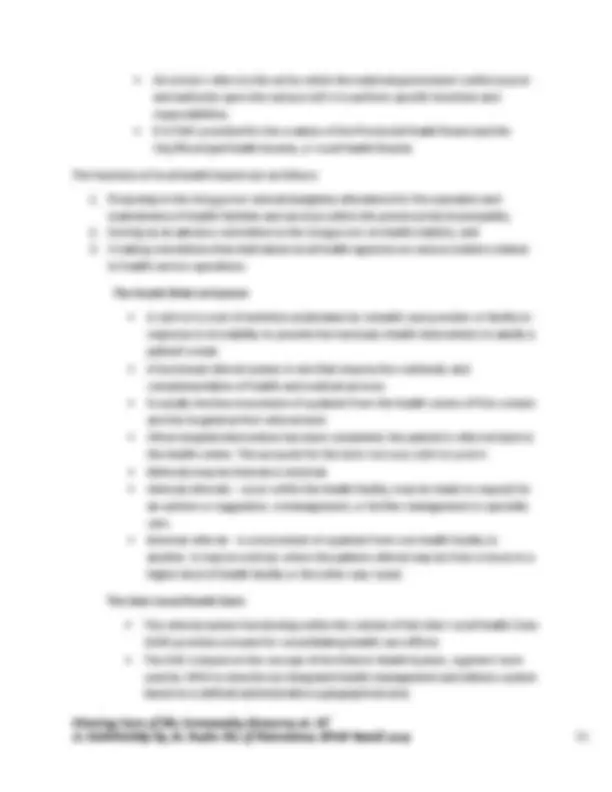
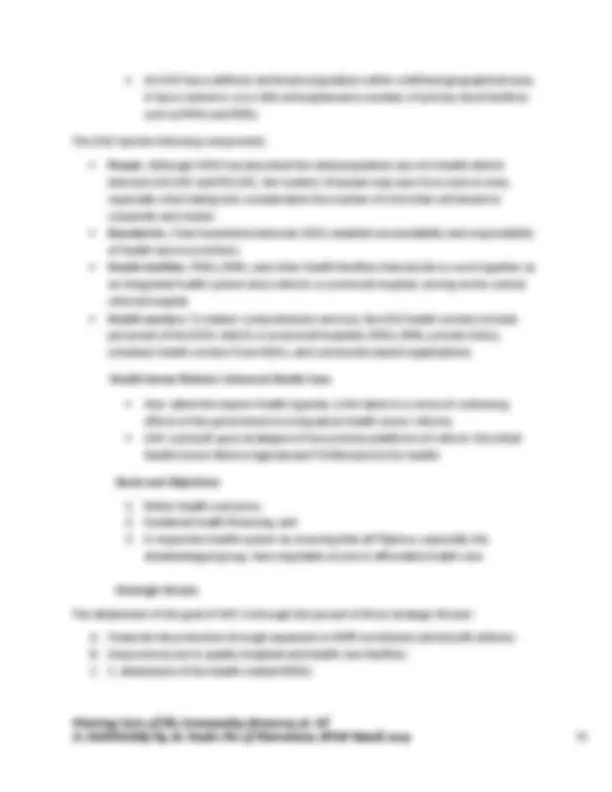
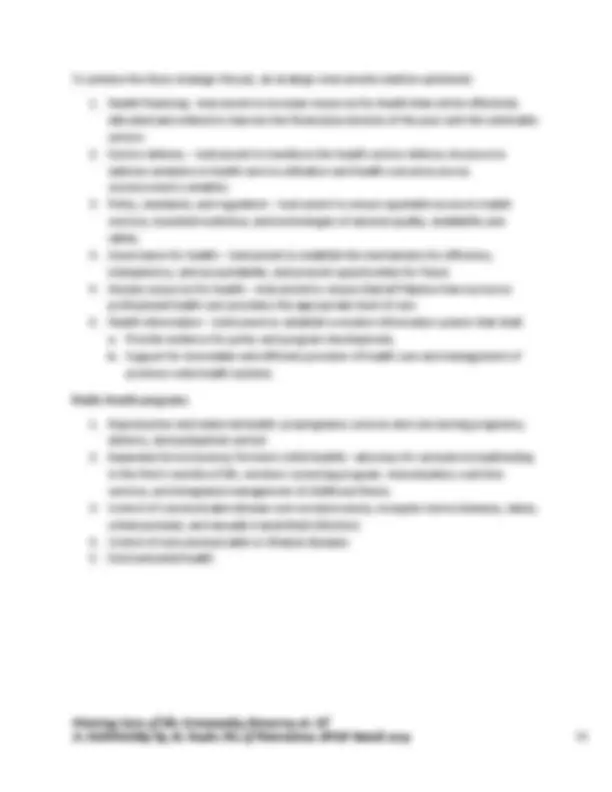

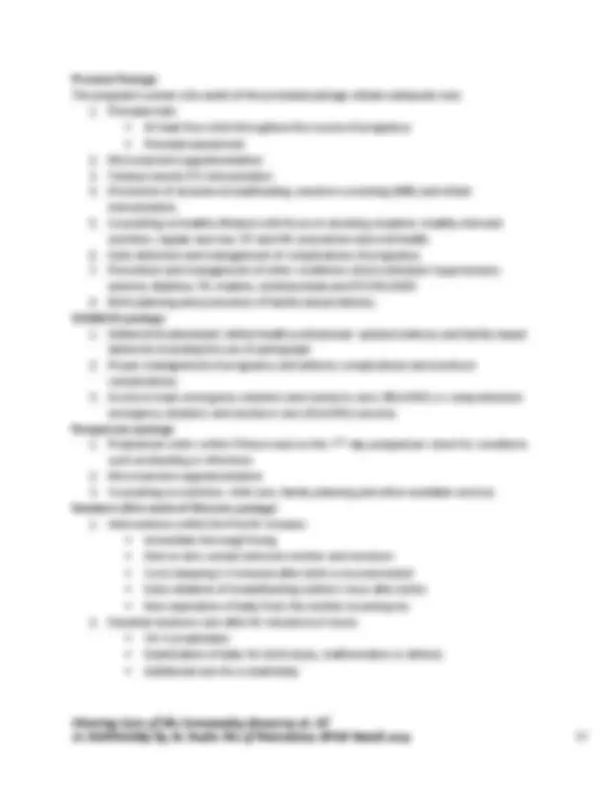
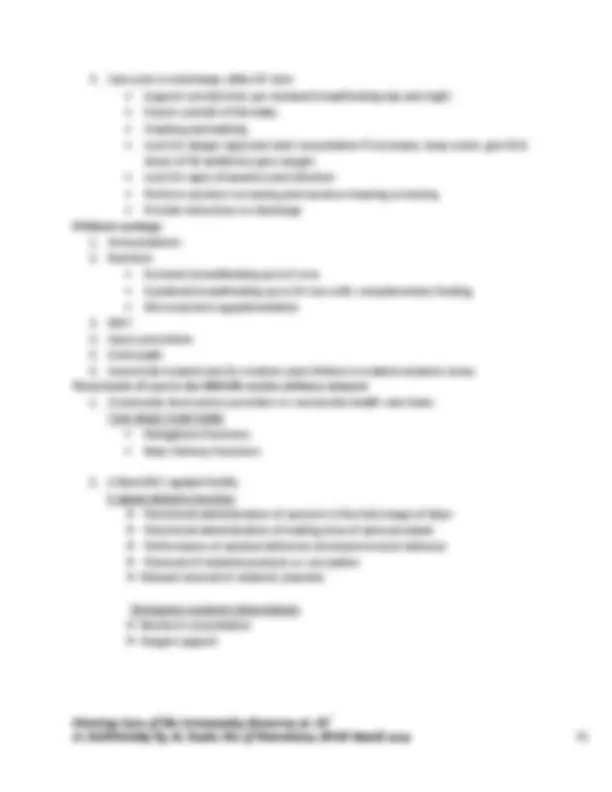
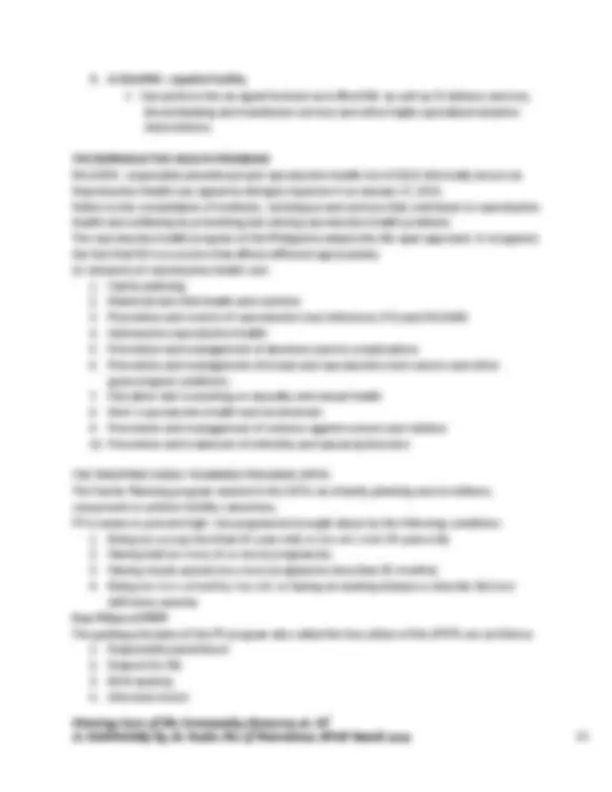
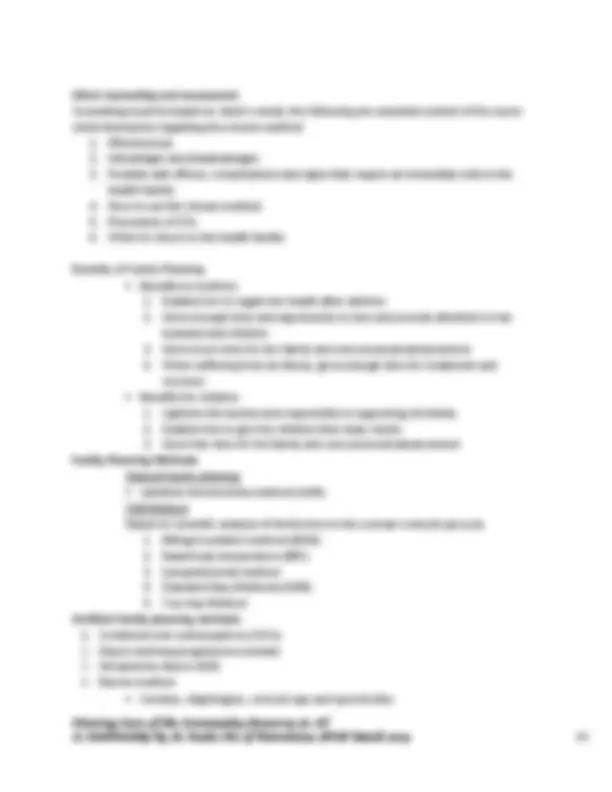
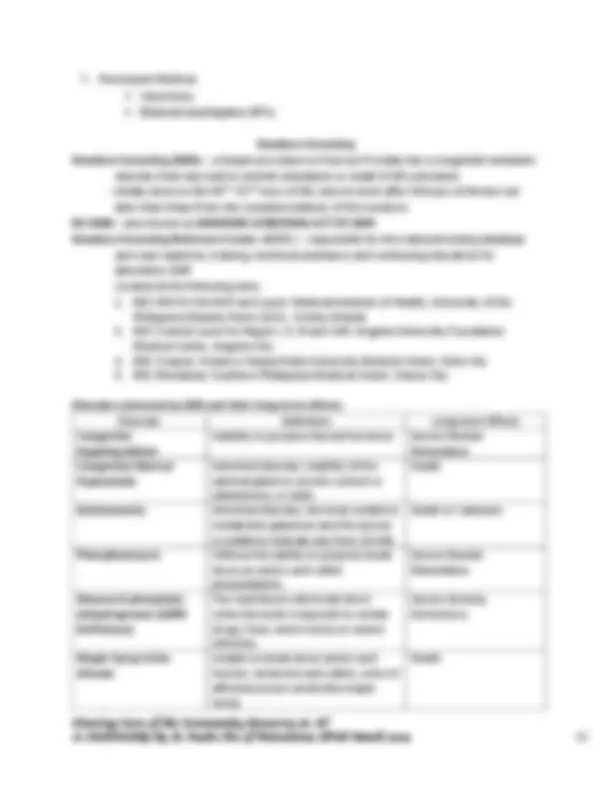
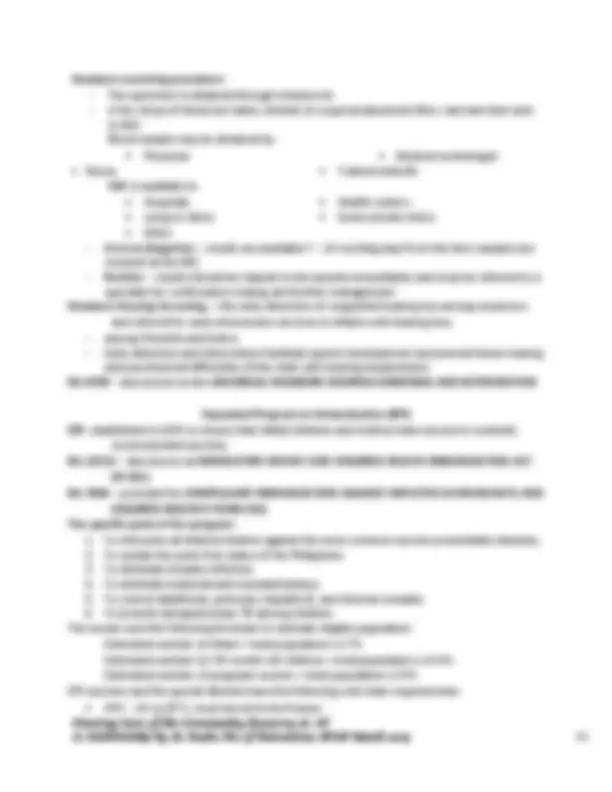
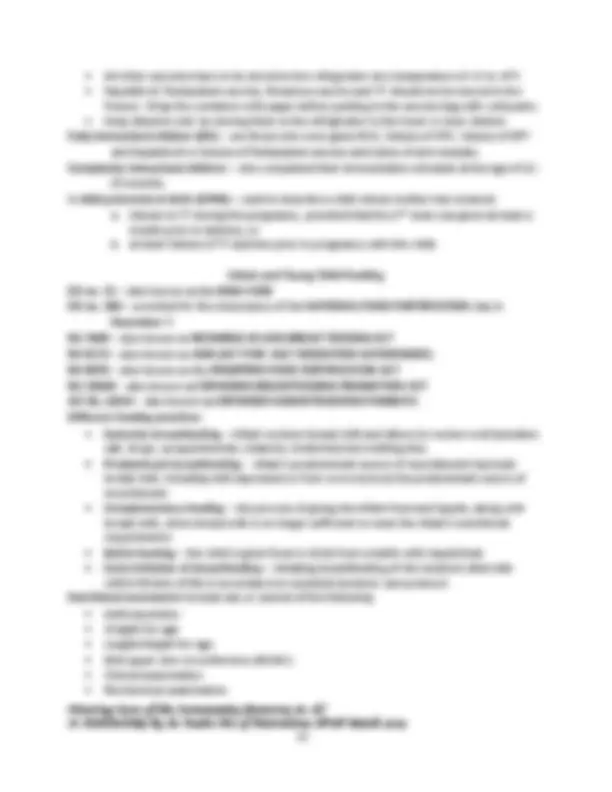
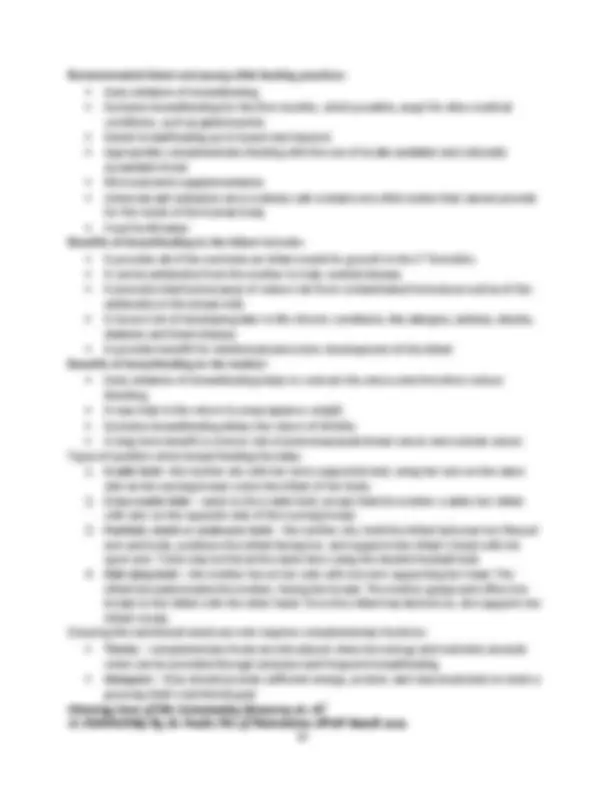
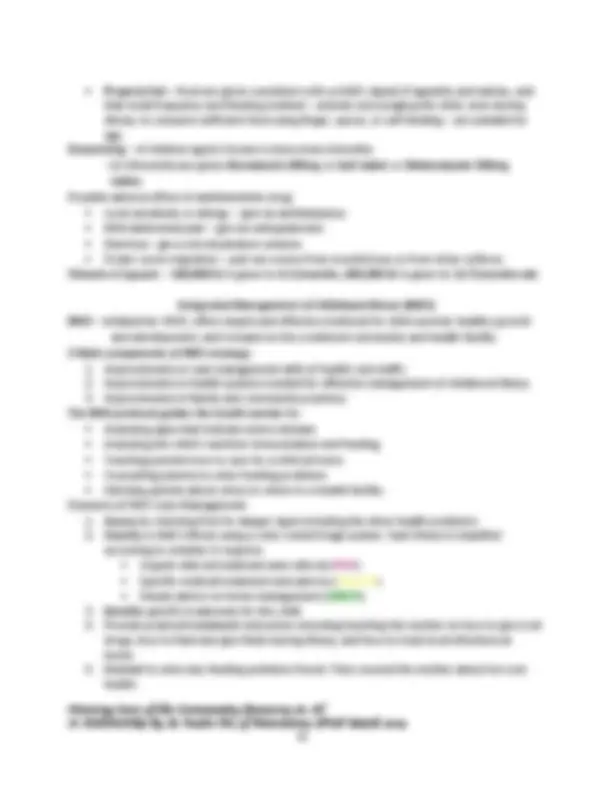
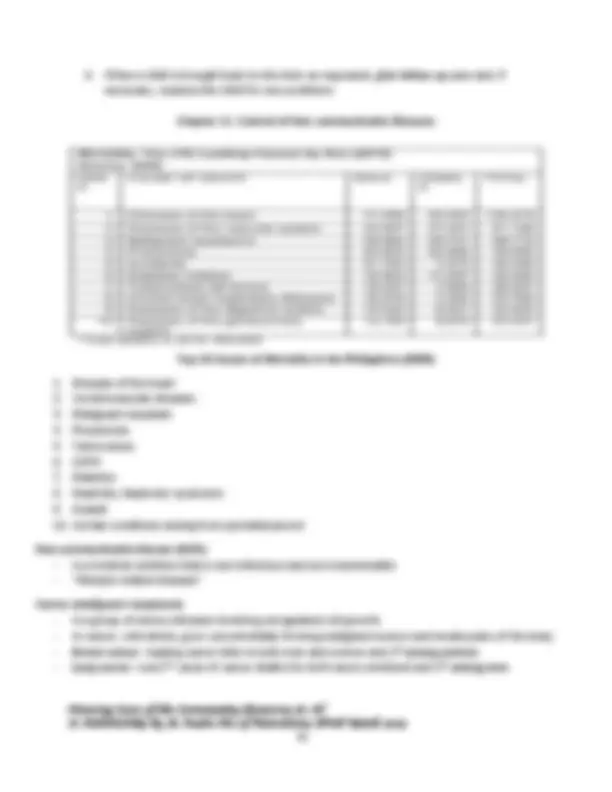
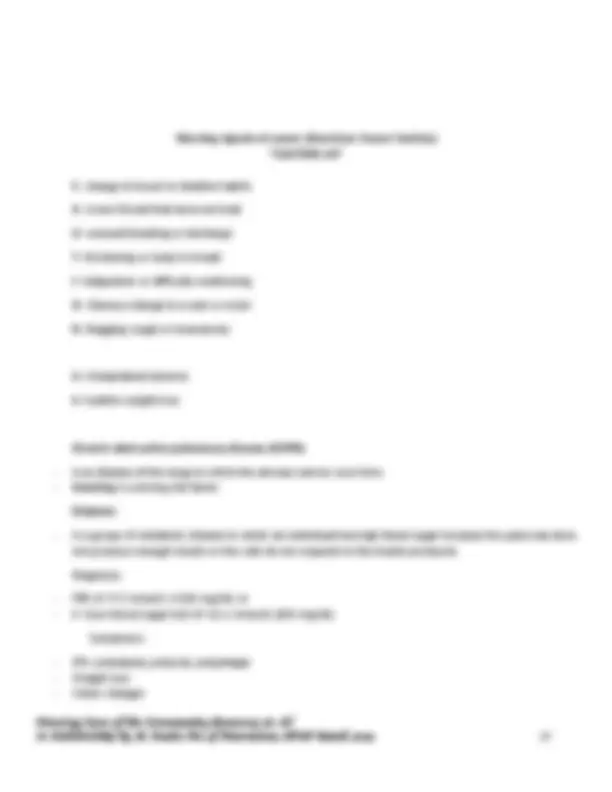
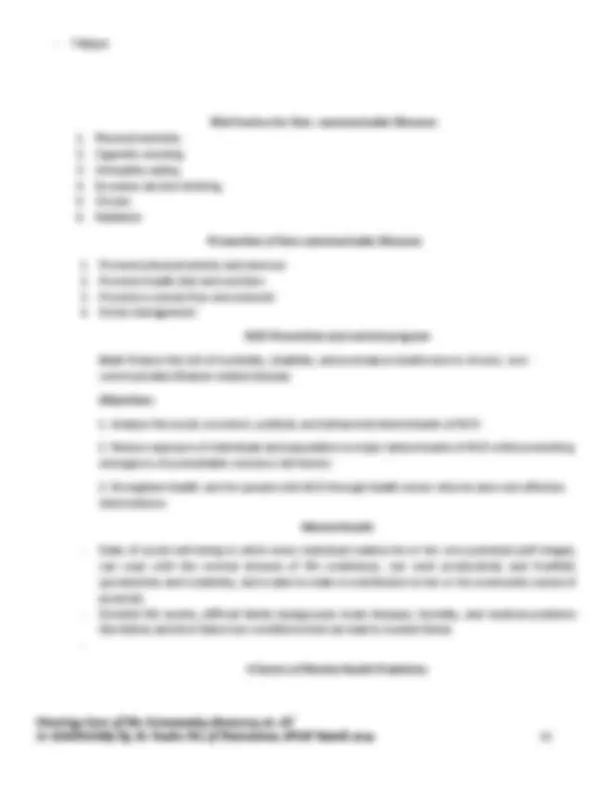
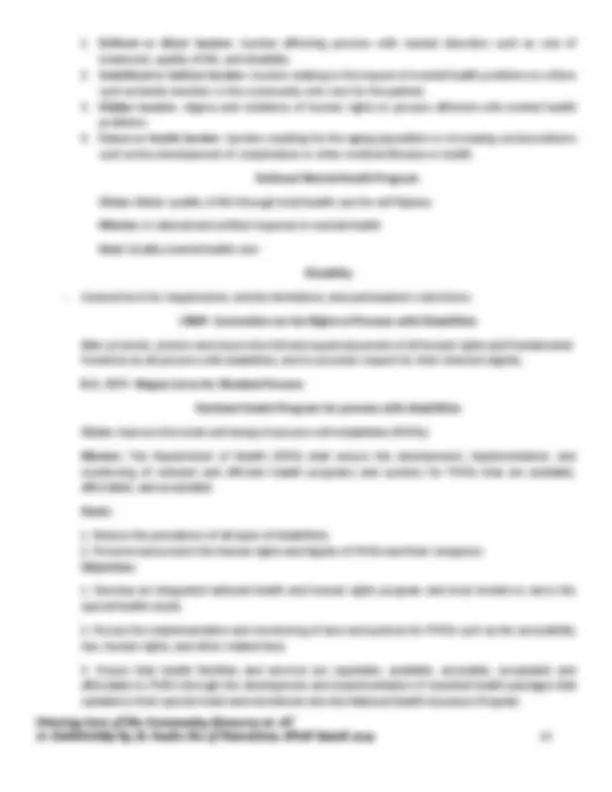
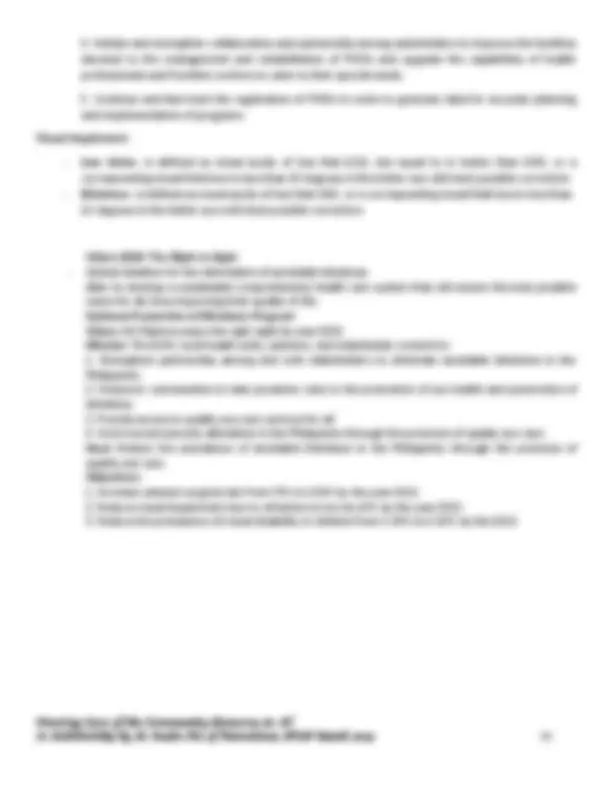
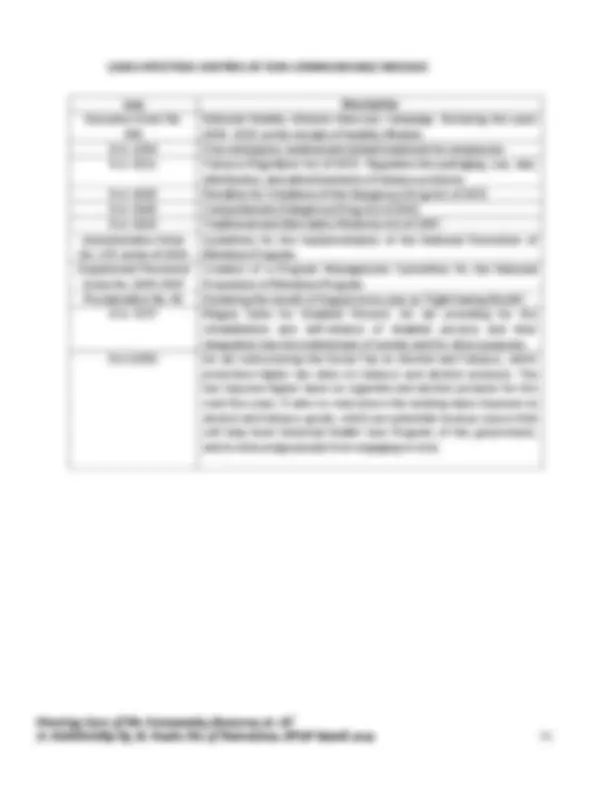
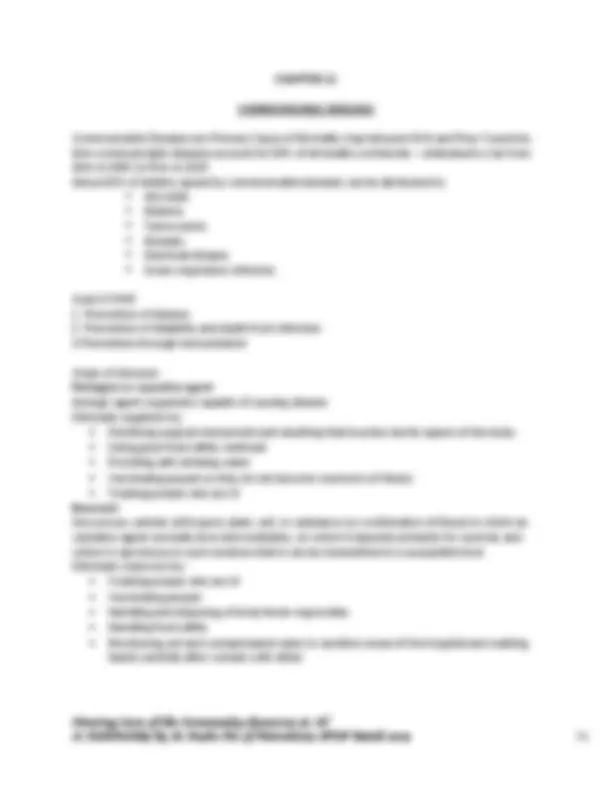
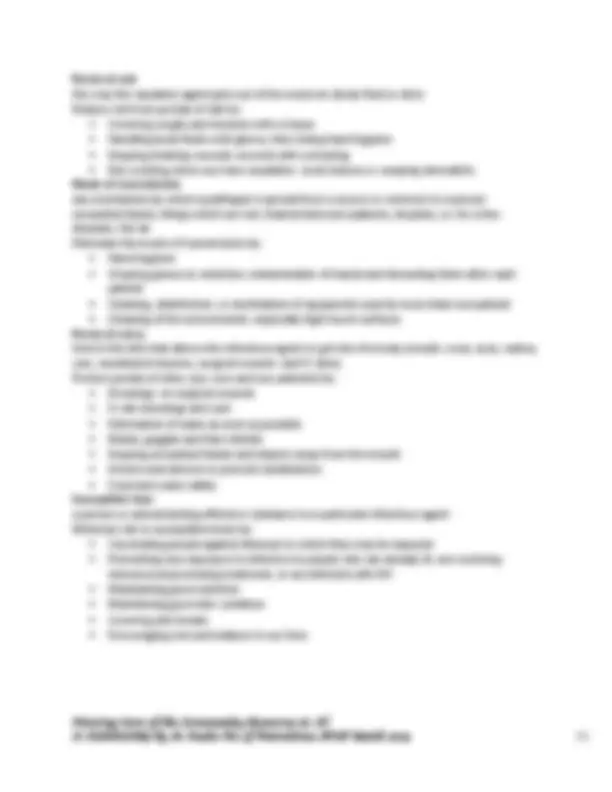
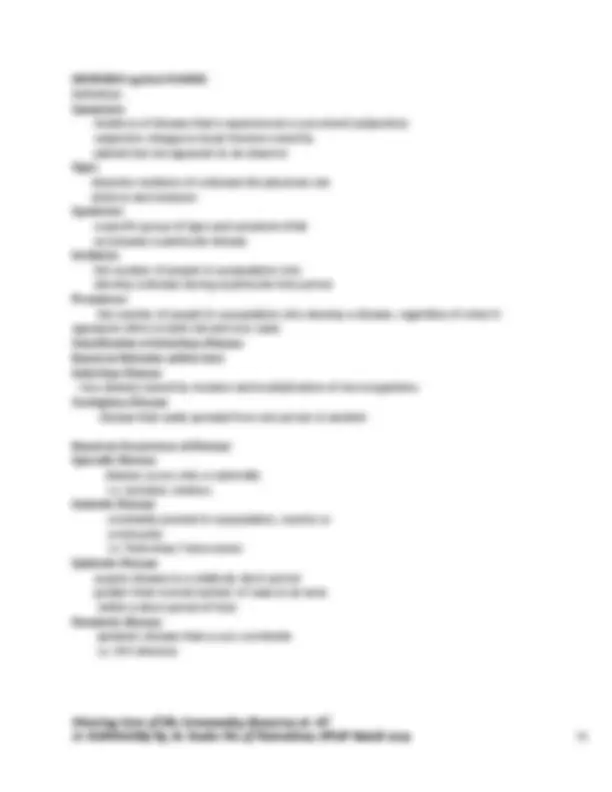
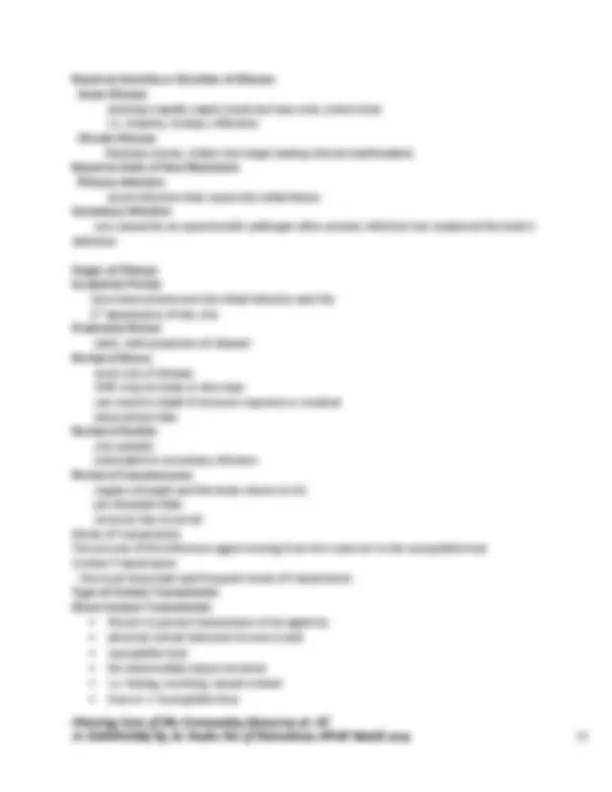
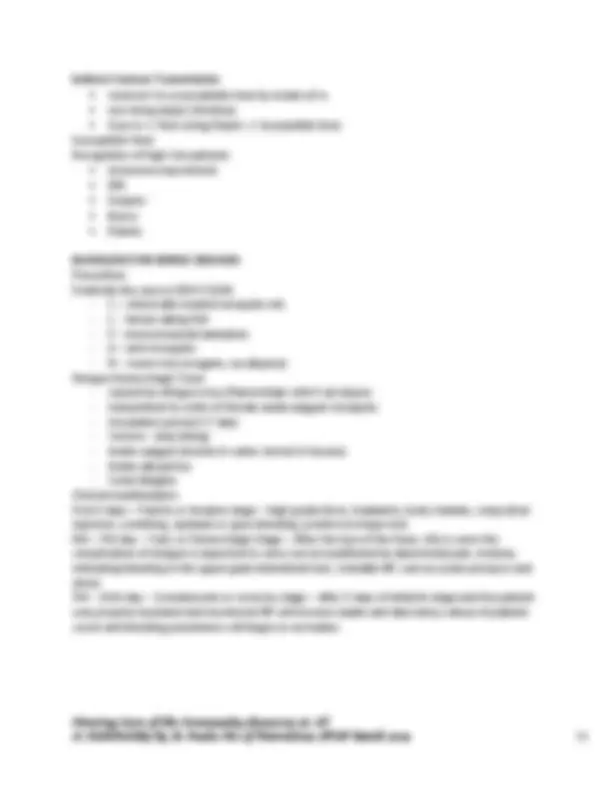
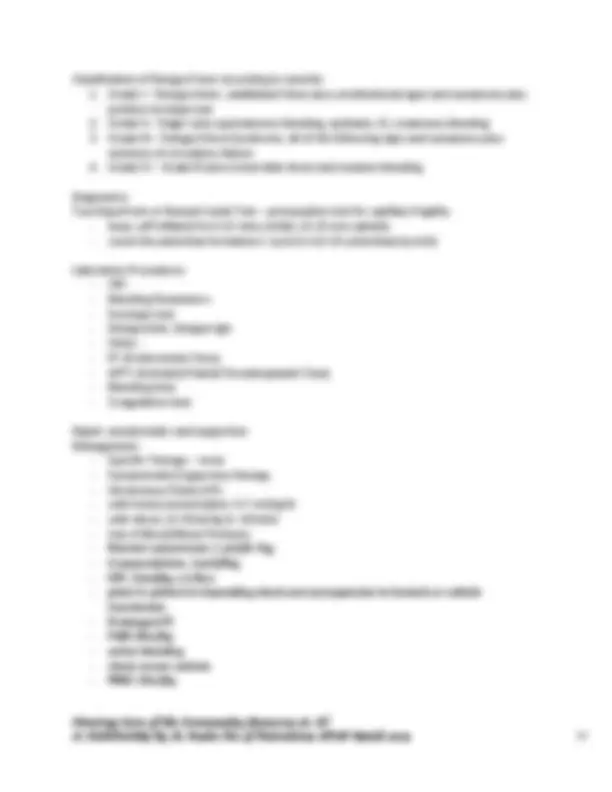
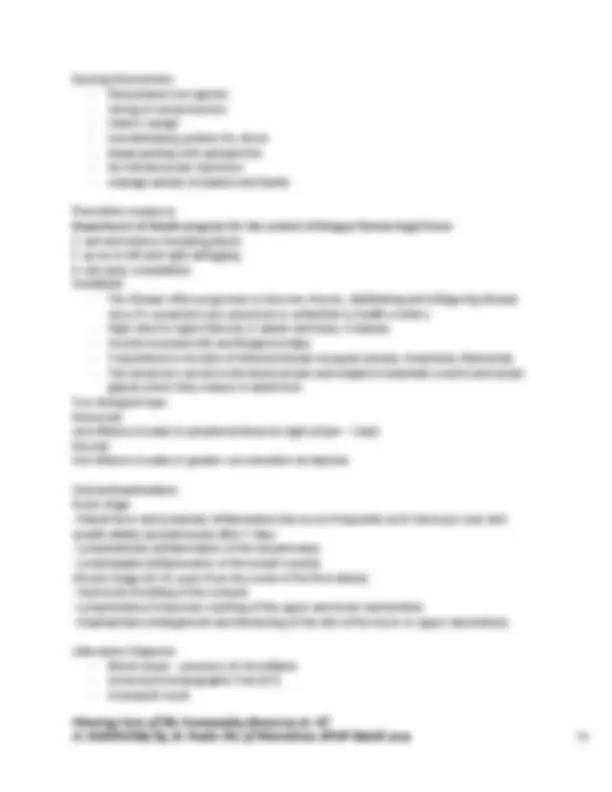
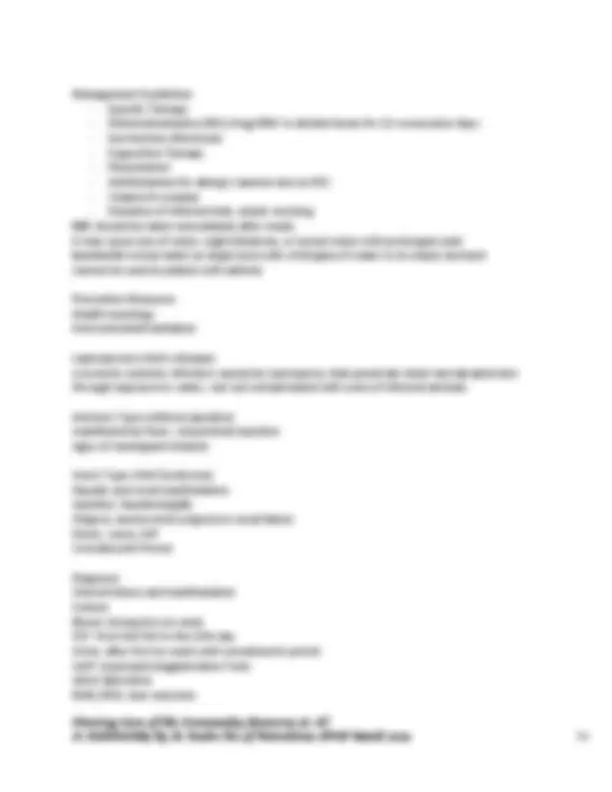
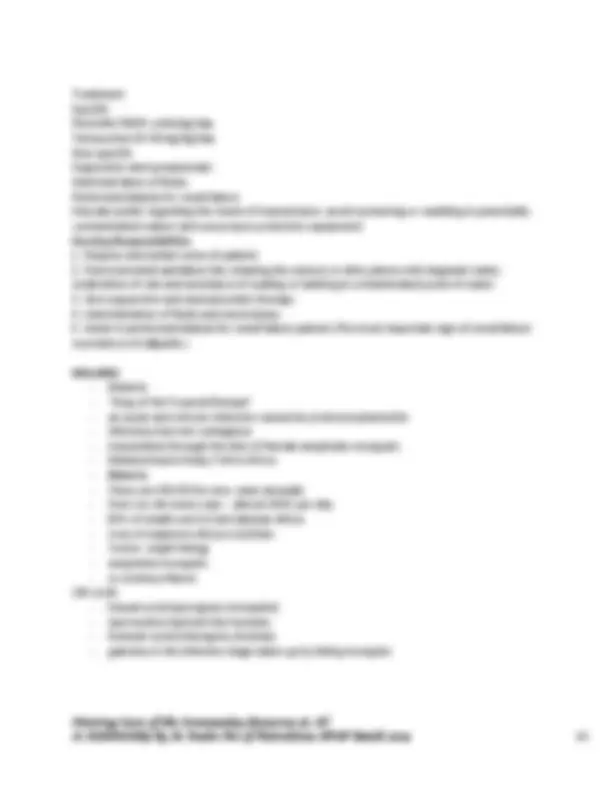
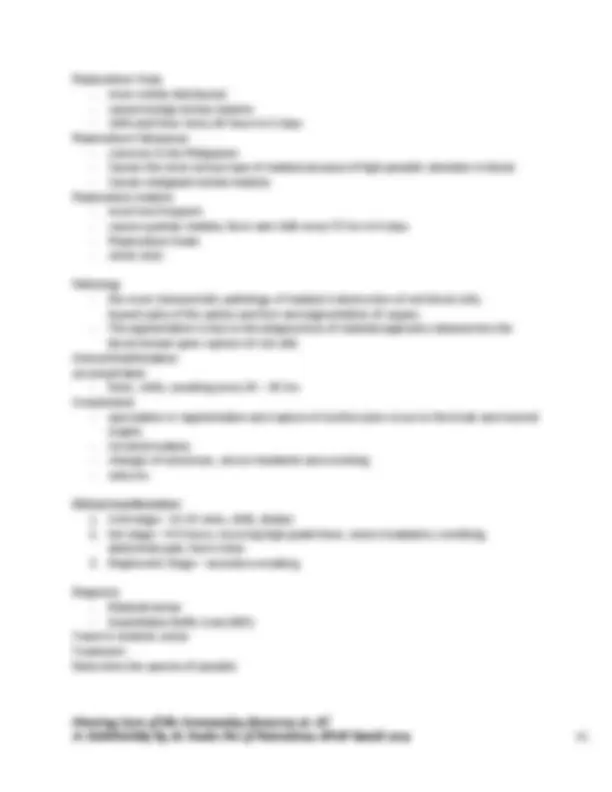
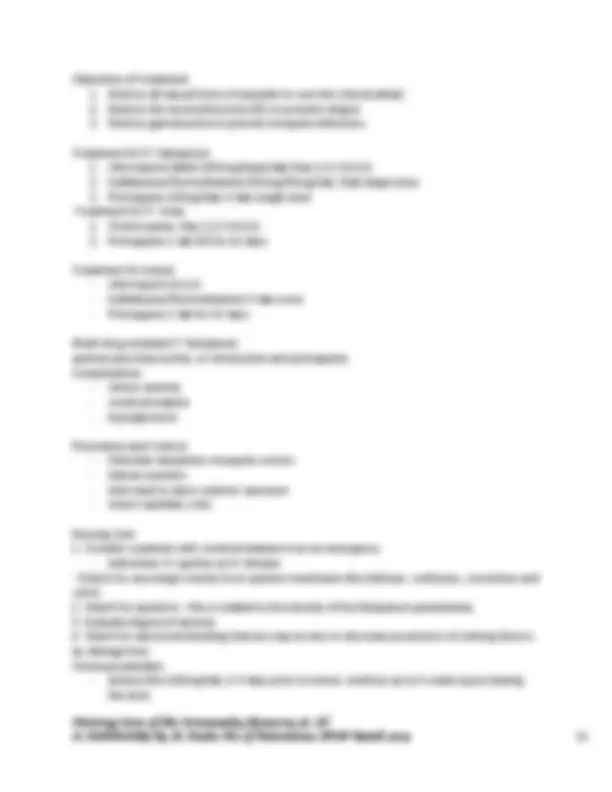

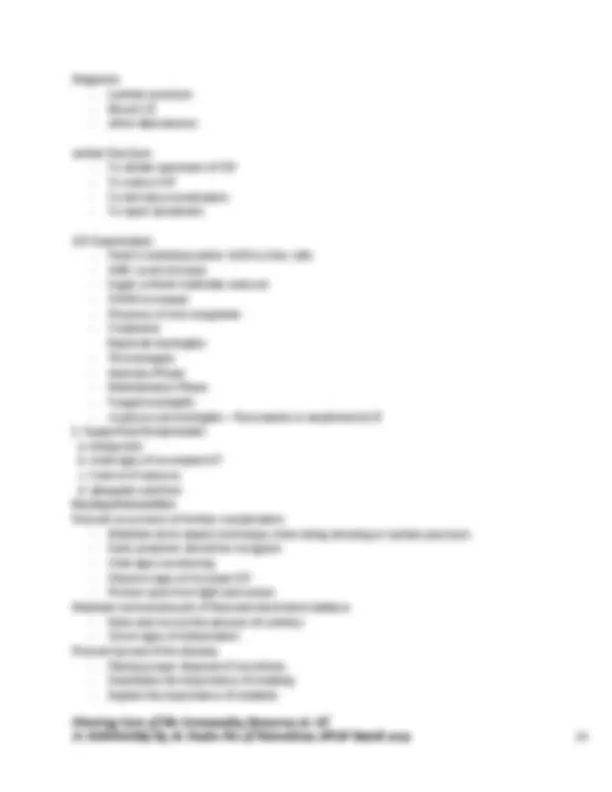
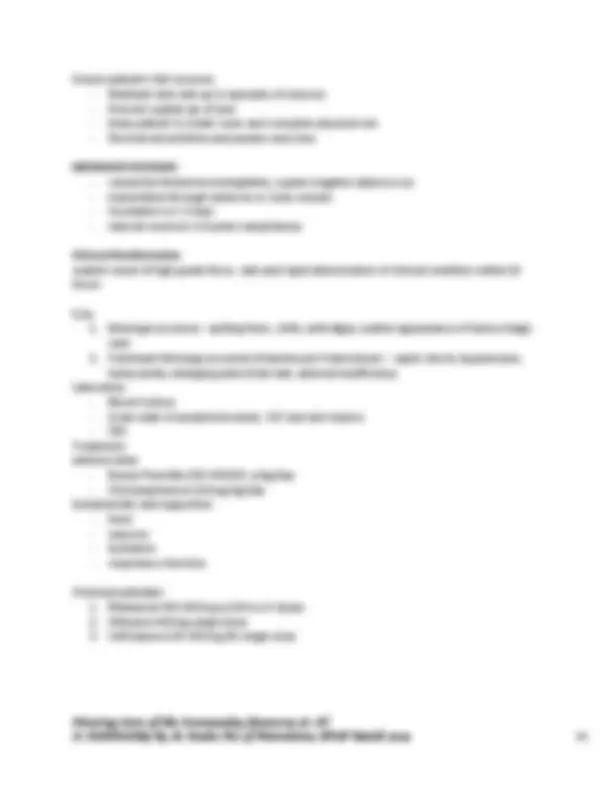
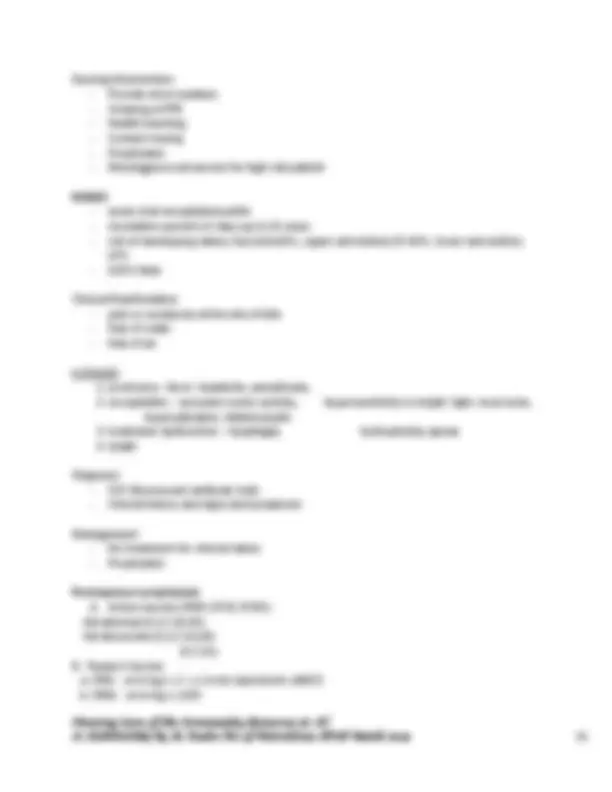
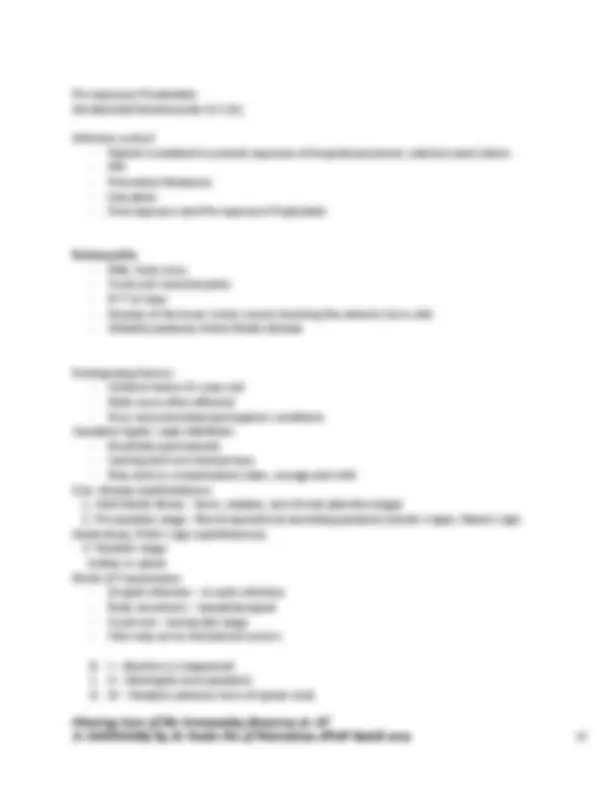
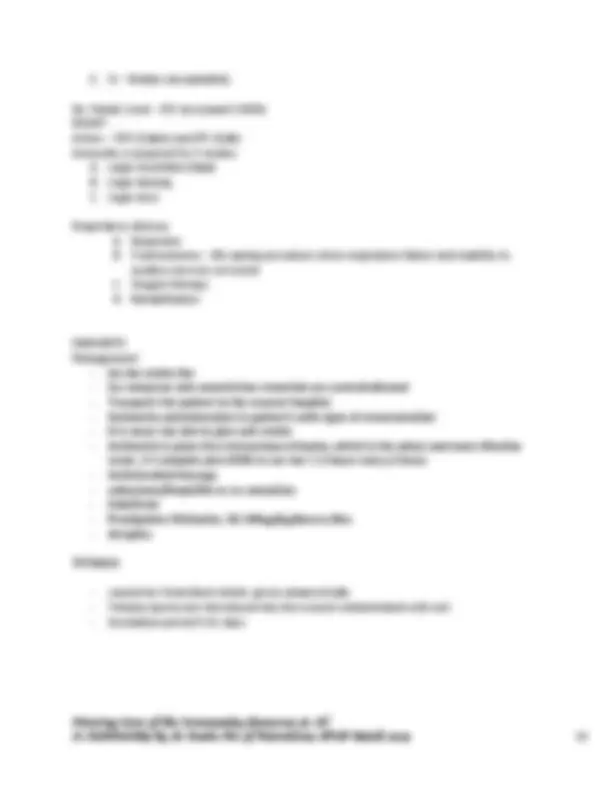
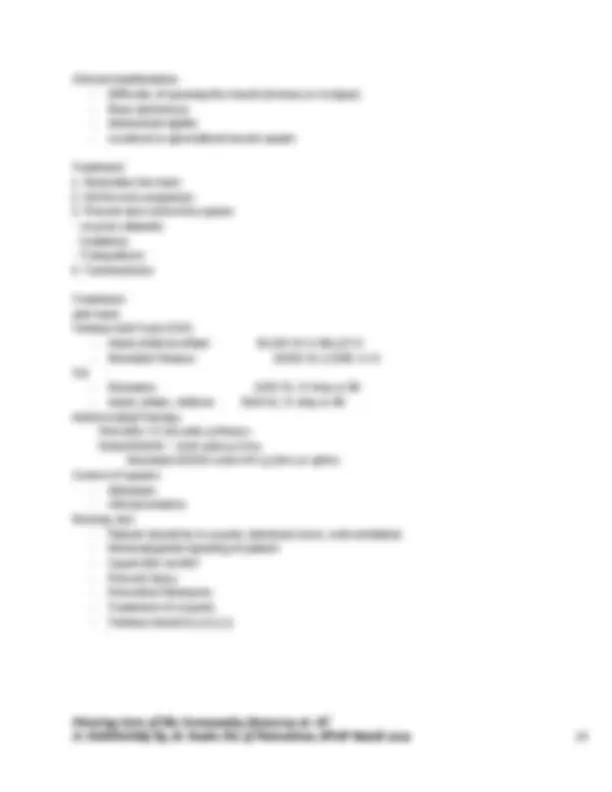
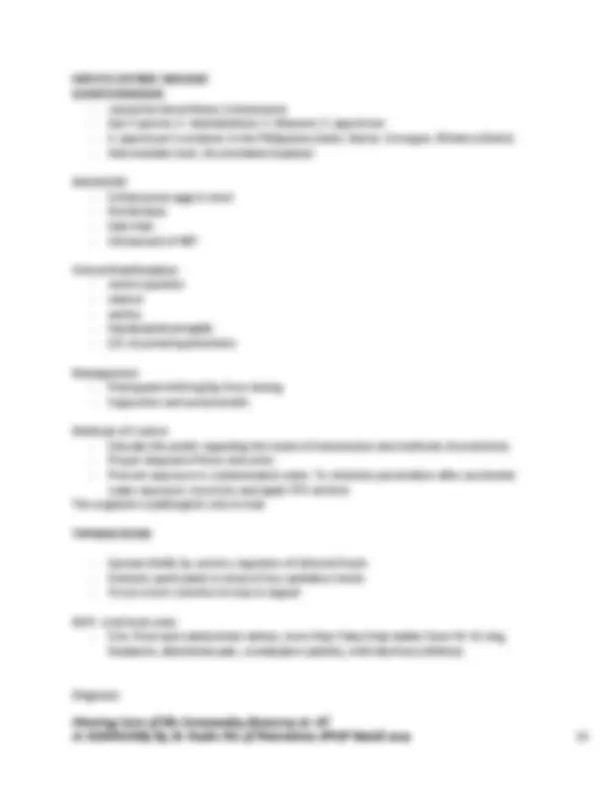
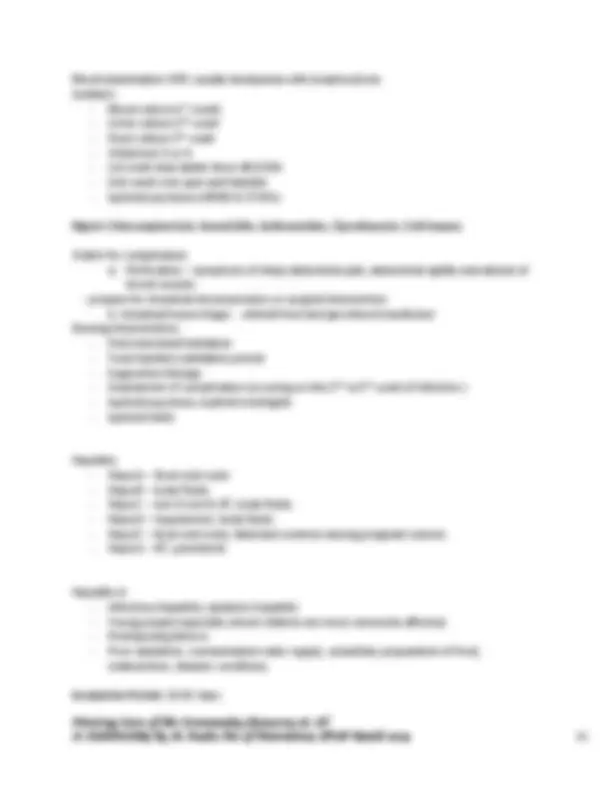
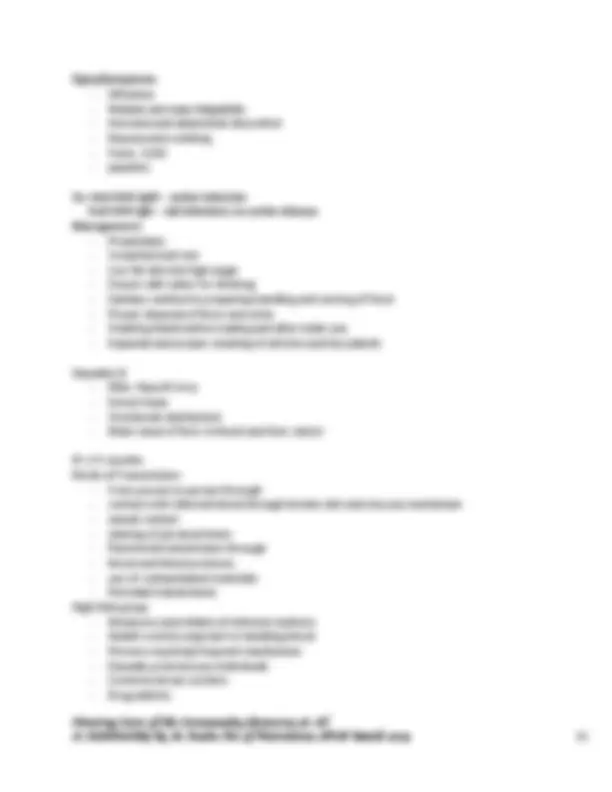
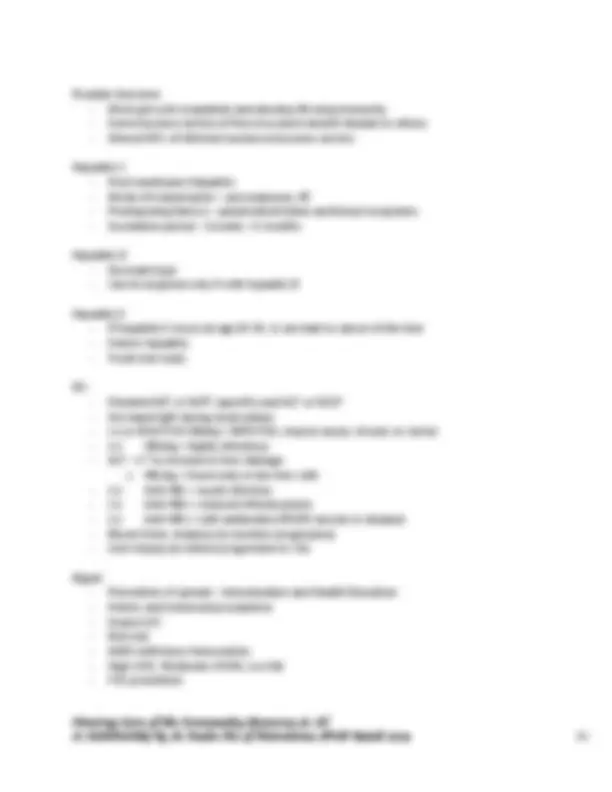
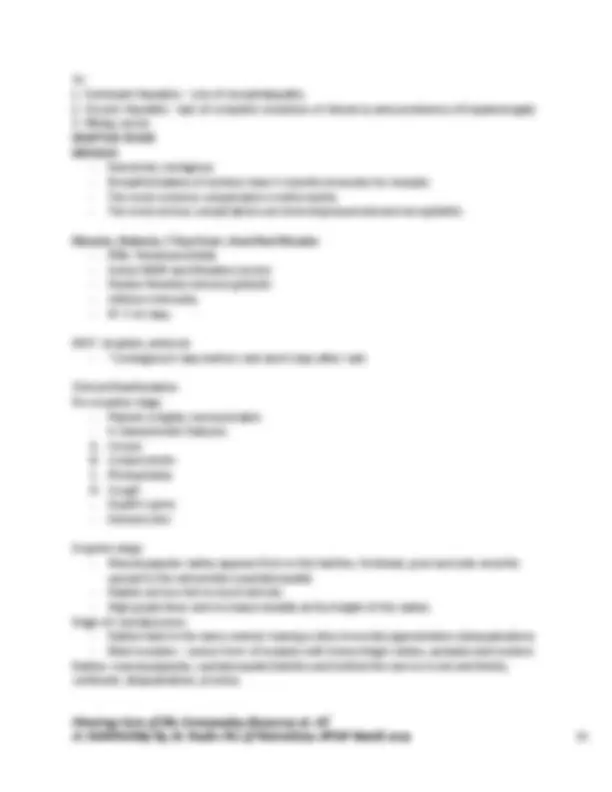
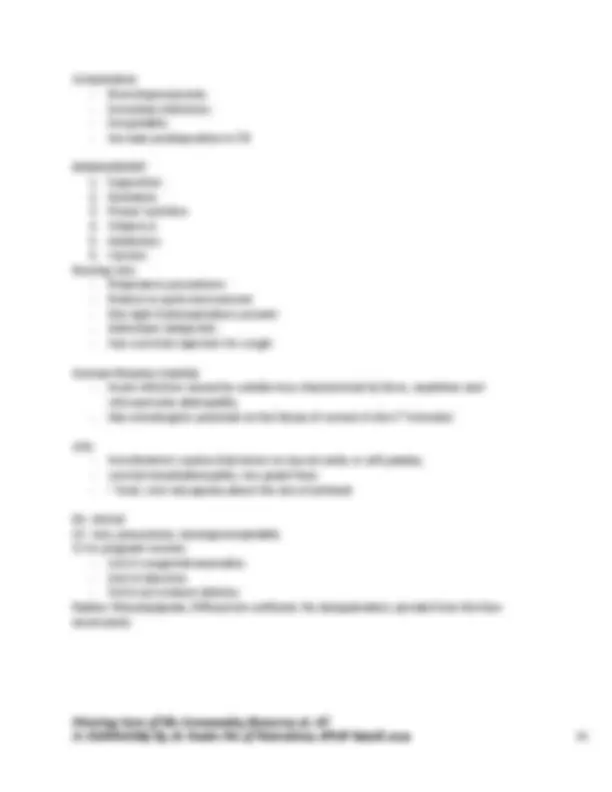
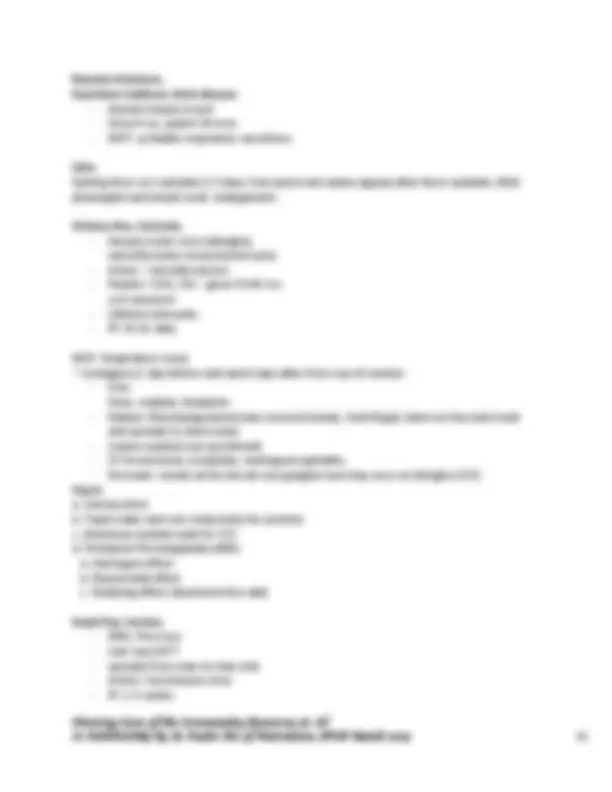
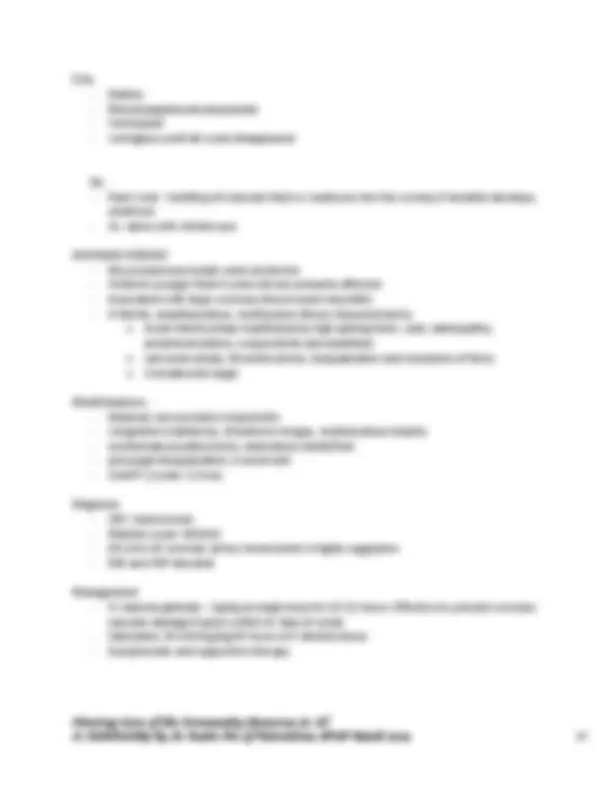
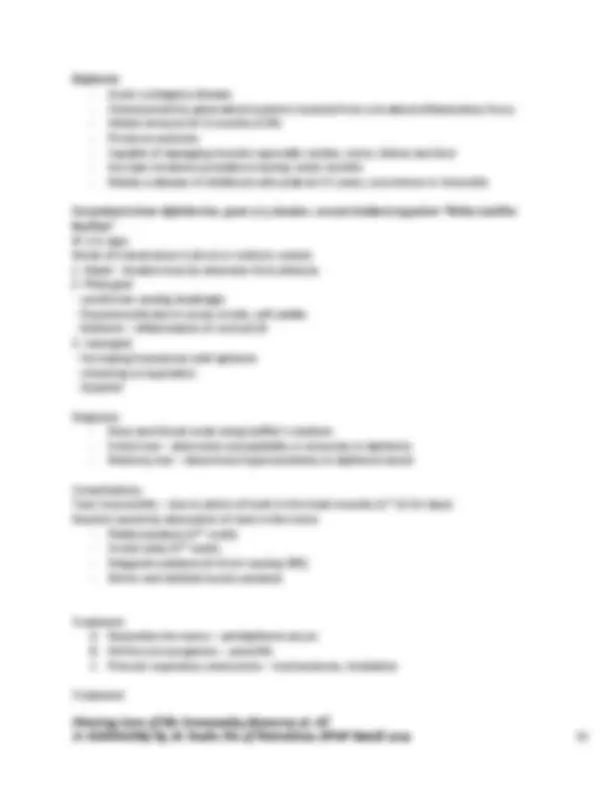
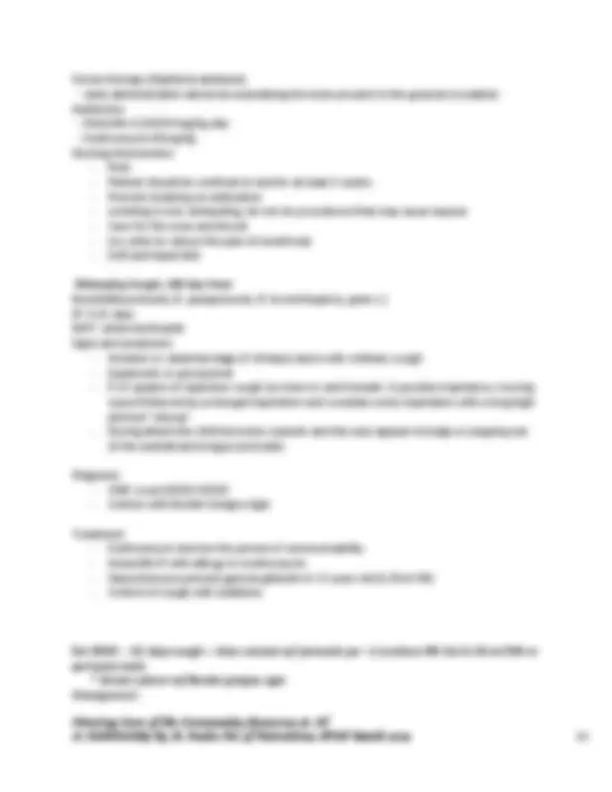
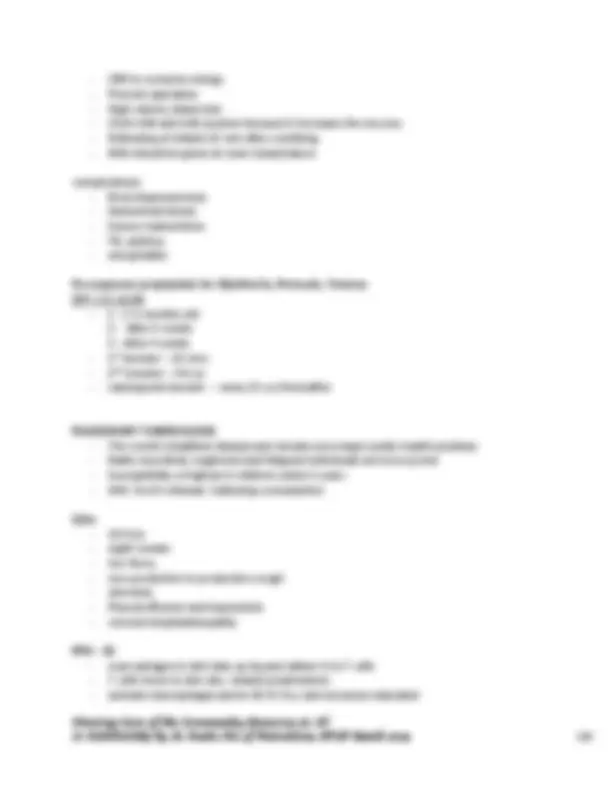


Study with the several resources on Docsity

Earn points by helping other students or get them with a premium plan


Prepare for your exams
Study with the several resources on Docsity

Earn points to download
Earn points by helping other students or get them with a premium plan
Community
Ask the community for help and clear up your study doubts
Discover the best universities in your country according to Docsity users
Free resources
Download our free guides on studying techniques, anxiety management strategies, and thesis advice from Docsity tutors
fundamental concepts of community health nursing notes
Typology: Lecture notes
1 / 137

This page cannot be seen from the preview
Don't miss anything!





























































































Nursing Care of the Community-Famorca et. Al
Chapter 1: Fundamental Concepts of Community Health Nursing
Nursing Care of the Community-Famorca et. Al
Nursing Care of the Community-Famorca et. Al
Nursing Care of the Community-Famorca et. Al Community-based Nursing
Nursing Care of the Community-Famorca et. Al
Nursing Care of the Community-Famorca et. Al
Nursing Care of the Community-Famorca et. Al Chapter 2: THEORETICAL FOUNDATIONS OF COMMUNITY HEALTH NURSING PRACTICE
Nursing Care of the Community-Famorca et. Al (a) For example: a nurse’s feedback to a mother that her child is underweight makes the mother more aware of her child’s needs and allows her to take action. − Subsystems are the components of a system that interact to accomplish their own purpose. (Family members) − Suprasystems are a bigger system composed of families who interrelate with and affect one another. (Families)
Nursing Care of the Community-Famorca et. Al Perceived benefits of action The perceived benefits of a behavior are strong motivators o that behavior. These motivate the behavior through intrinsic and extrinsic benefits. Intrinsic benefits include increased energy and decreased appetite. Extrinsic benefits include social rewards such as compliments and monetary rewards. Perceived barriers to action Barriers are perceived unavailability, inconvenience, expense, difficulty or time regarding health behaviors Perceived self- efficacy Self-efficacy is one’s belief that he or she is capable of carrying out a health behavior. If one has high self- efficacy regarding a behavior, one I more likely to engage in that behavior than if one has low self-efficacy. Activity related affect The feelings associated with a behavior will likely affect whether an individual will repeat or maintain the behavior Interpersonal influences I the HPM, these are feelings or thoughts regarding the beliefs or attitudes of others. Primary influences are family, peers, and health care providers. Situational influences These are perceived options available, demand characteristics, and aesthetic features of the environment where the behavior will take place. For example, a lovely day will increase the probability of one taking a walk; the fire code will prevent one from smoking indoors. Commitment to a plan of action Pender states that “commitment to a plan of action initiates a behavioral event”. This commitment will compel one into the behavior until completed, unless a competing demand or preference intervenes. Immediate competing demands and preferences These are alternative behaviors that one considers as possible optional behaviors immediately prior to engaging in the intended, planned behavior. One has little control over competing demands, but one has great control over competing preferences Health promoting behavior This is the goal or outcome of the HPM. The aim of health promoting behavior is the attainment of positive health outcomes The model depicts complex multidimensional factors which people interact with as they work to achieve optimum health.
Nursing Care of the Community-Famorca et. Al
Nursing Care of the Community-Famorca et. Al
SEPTEMBER 6 - 12, 1978 - first International Conference for PHC at Alma Ata, USSr, Russia L.O.I. 949 - legal basis for PHC in the Philippines
Nursing Care of the Community-Famorca et. Al Examples :
Nursing Care of the Community-Famorca et. Al Alternative health care modalities Term Definition Acupressure - application of pressure on acupuncture pts. w/o puncturing the skin Acupuncture - uses special needles to puncture and stimulate specific part of the body Aromatherapy - combines essential aromatic oils to then applied to the body Nutritional therapy
Nursing Care of the Community-Famorca et. Al
Community Organizing: Ensuring Health in the Hands of the People DEFINITION OF COMMUNITY ORGANIZING: Community organizing as a process consists of steps or activities that instill and reinforce the people’s self-confidence on their own collective strengths and capabilities (Manalili, 1990). It is the development of the community’s collective capacities to solve its own problems and aspire for development through its own efforts. Community organizing is a continuous process of educating the community to develop its capacity to assess and analyze the situation (which usually involves the process of consciousness raising), plan and implement interventions (mobilization), and evaluate them. Community Organizing is a process of educating and mobilizing members of the community to enable them to resolve community problems. It is a means to build the community’s capacity to work for the common good in general and health goals. Community organizing and community health nursing practice have common goals: People empowerment, development of self-reliant community, and improved quality of life. As a result, they become the health care professionals’ partners in health care delivery and overall community development. Community development means improvement access to resource ( including health resources) that will enable the people to improve their standards of living and overall quality life. The emphases of community organizing in primary health care are the following: